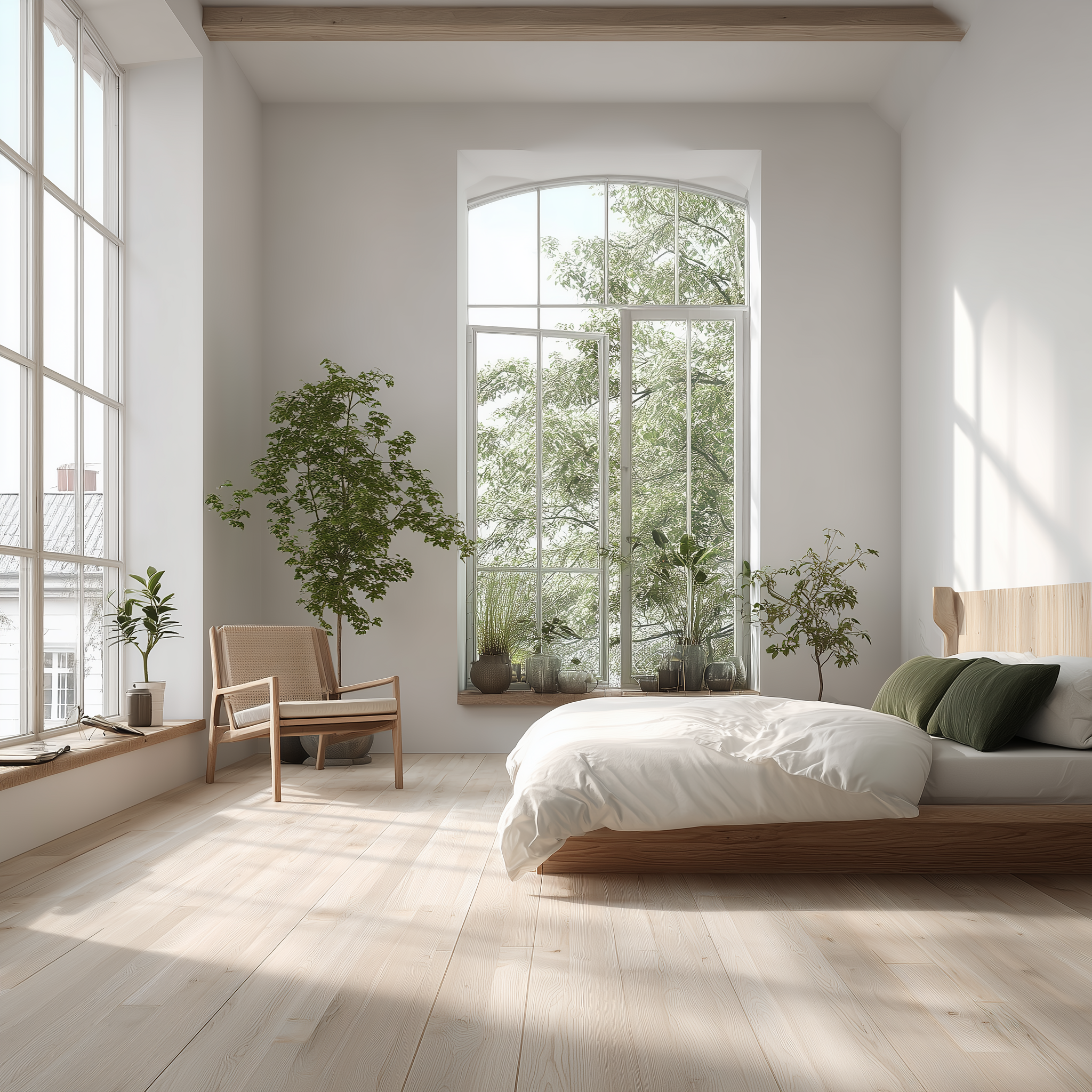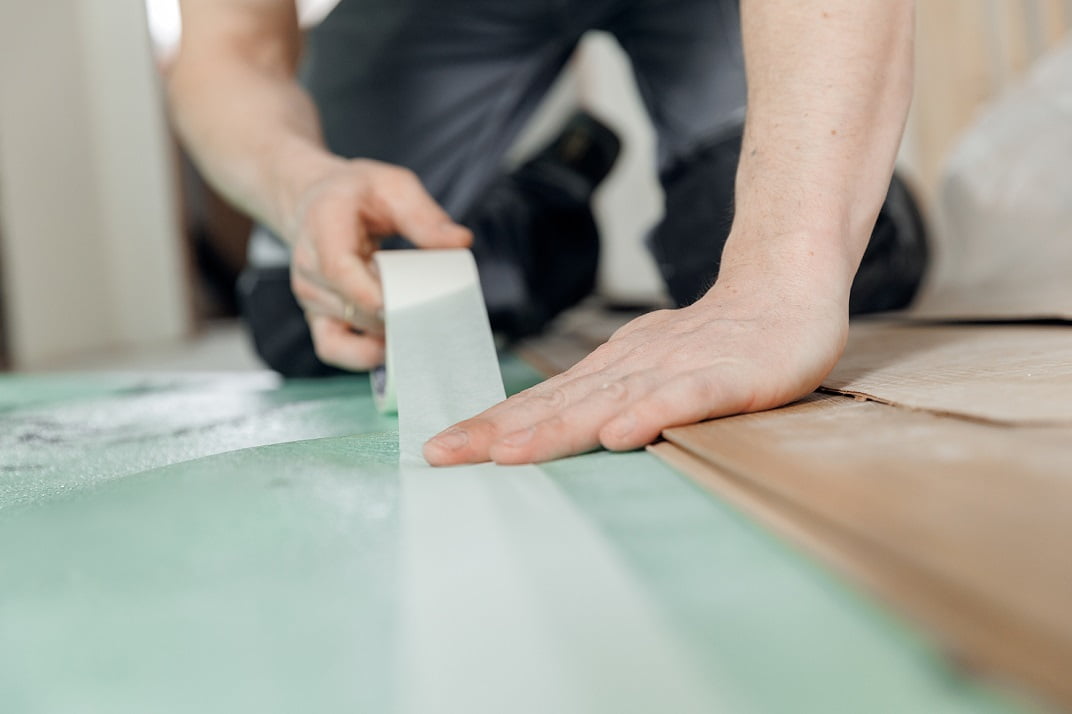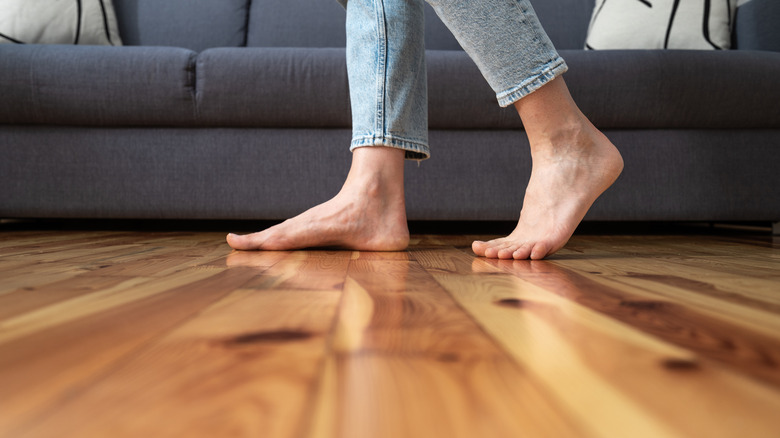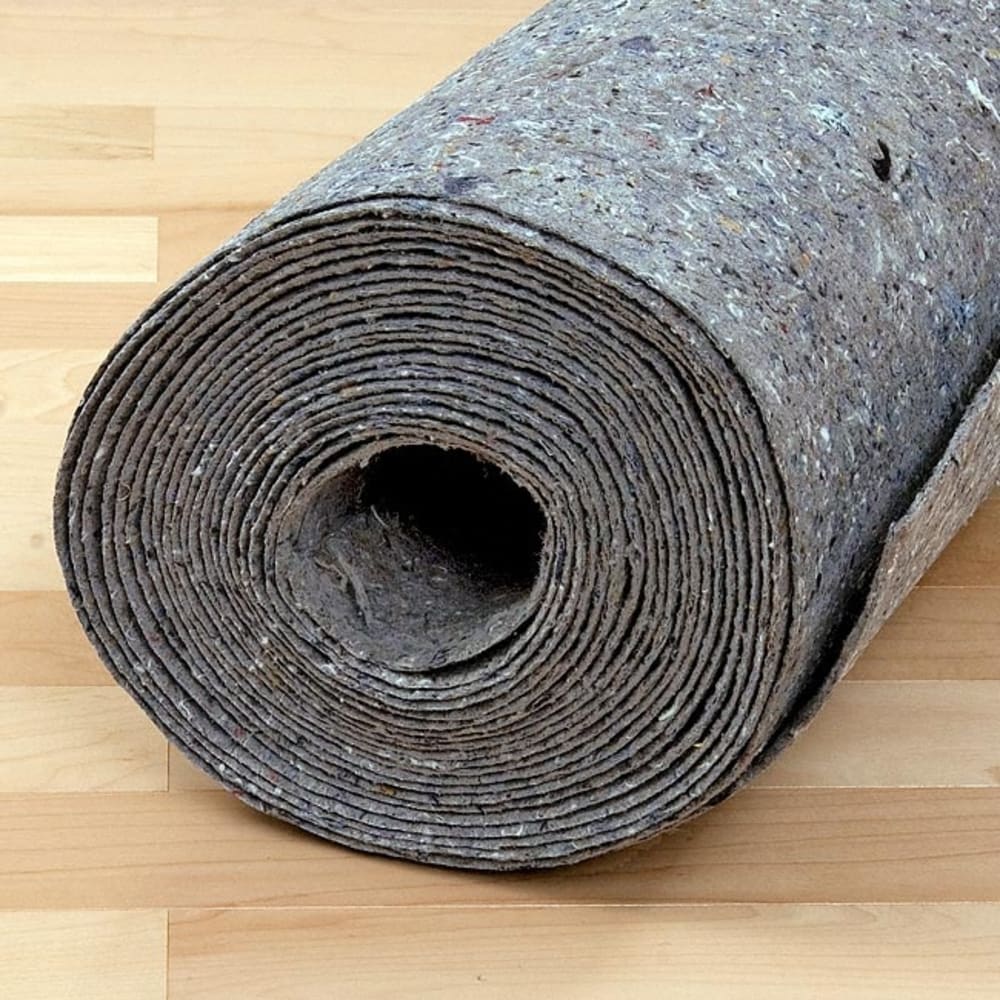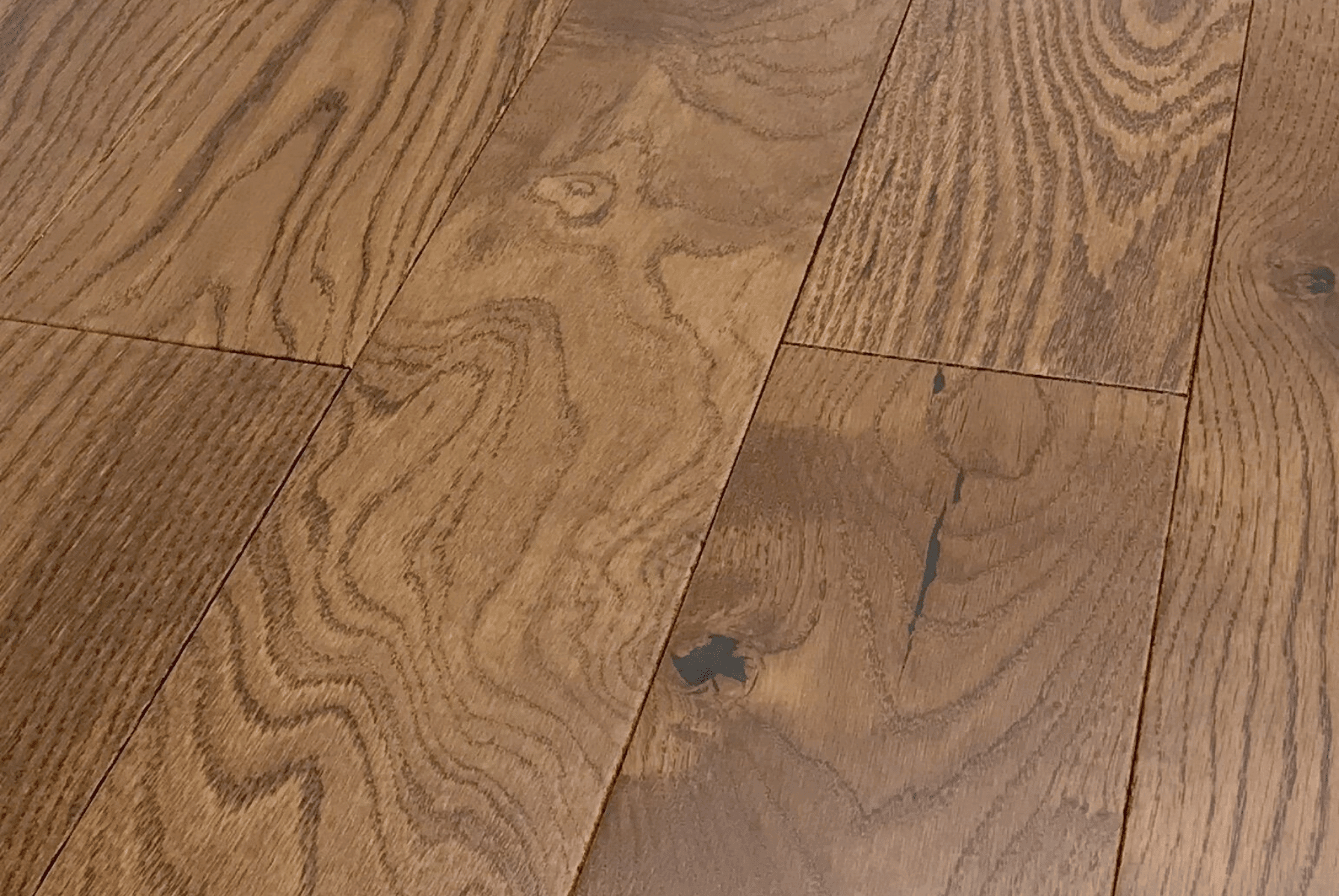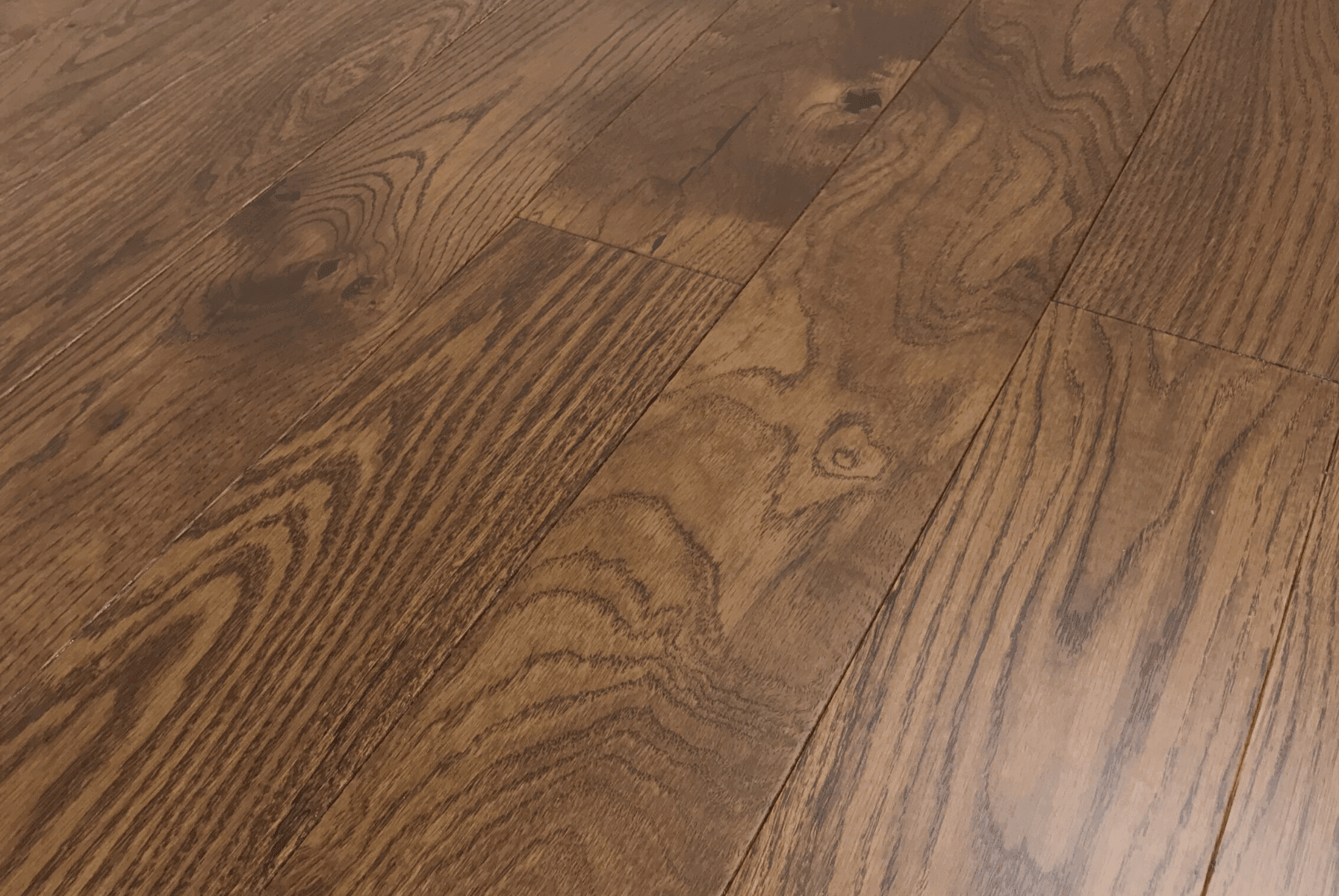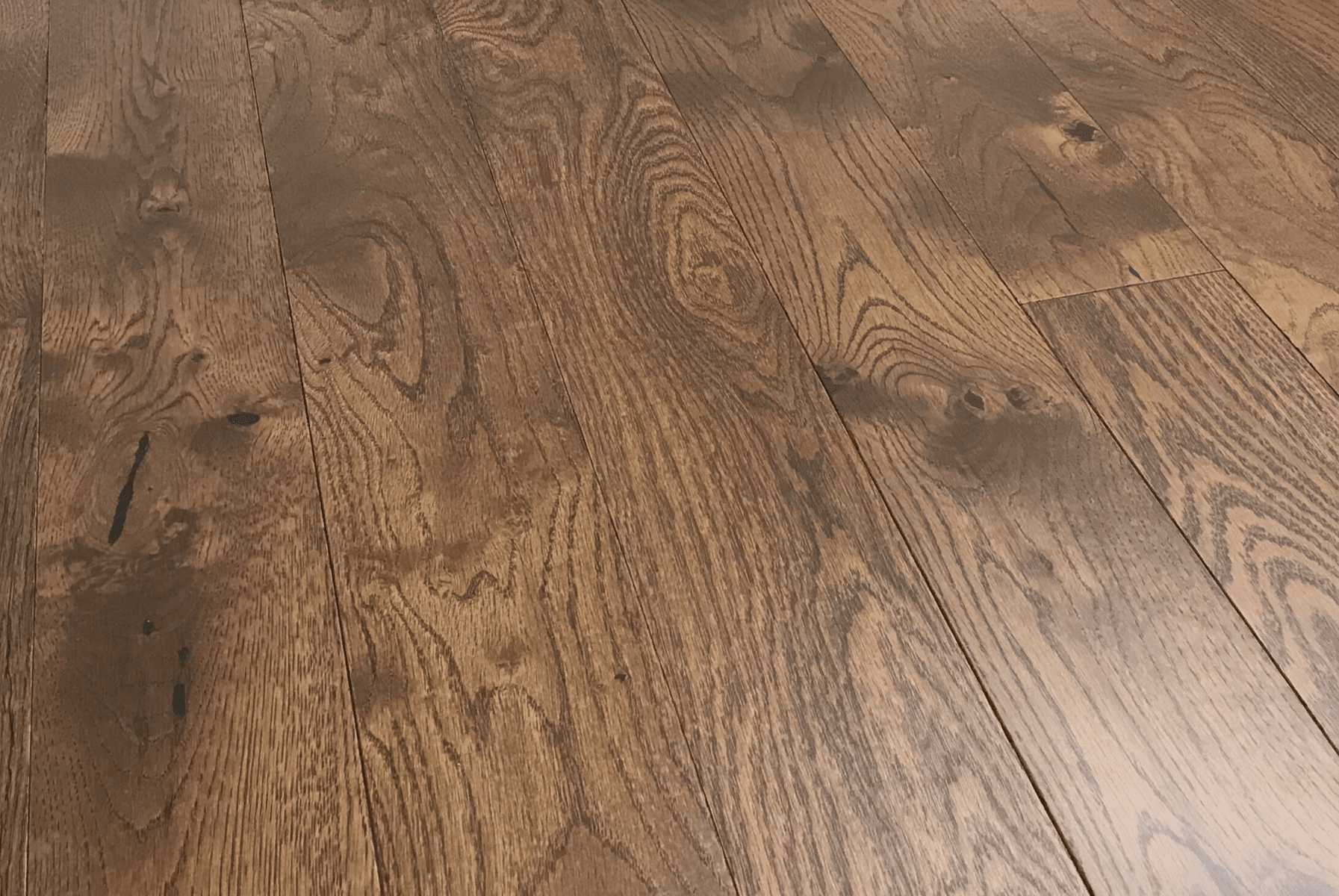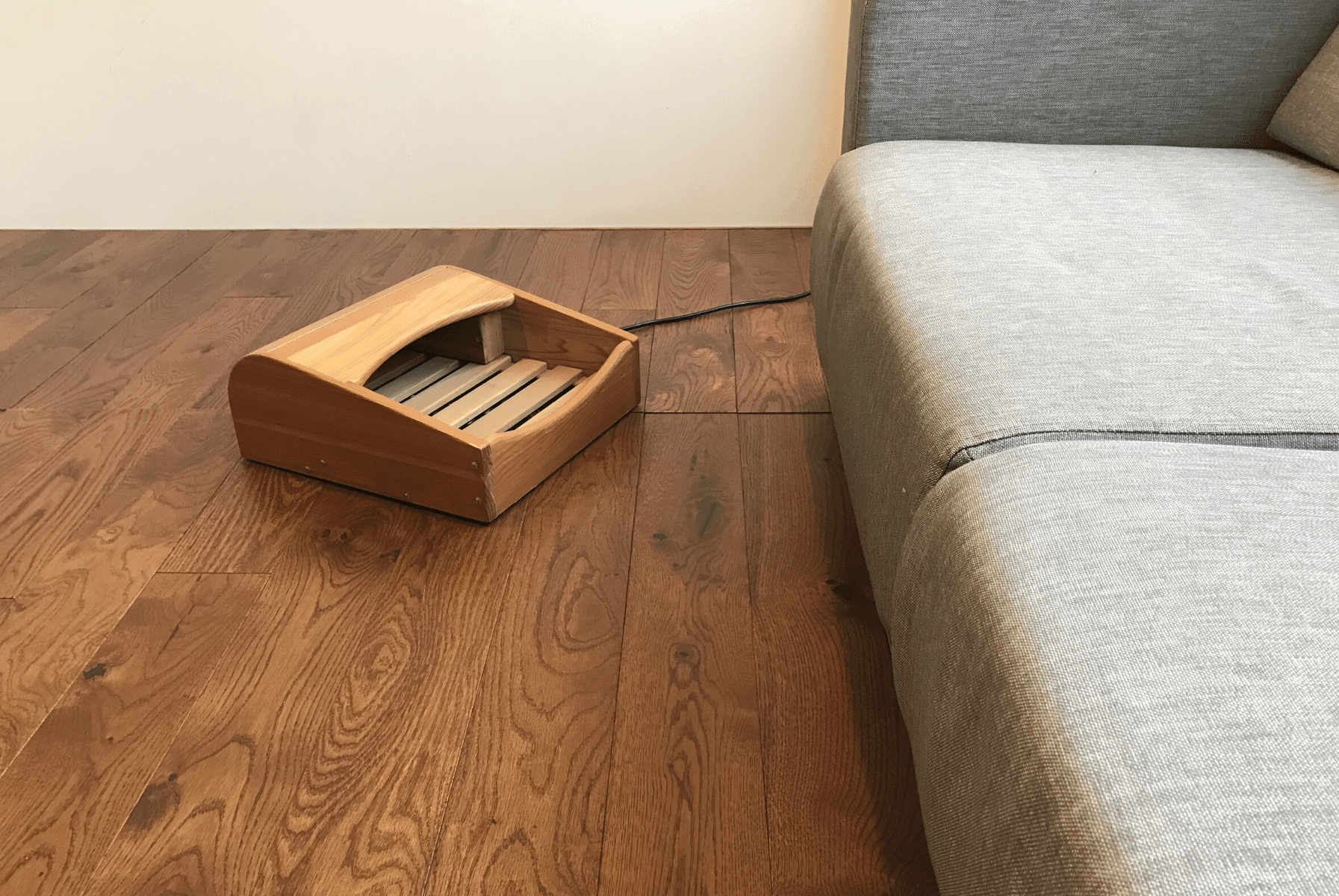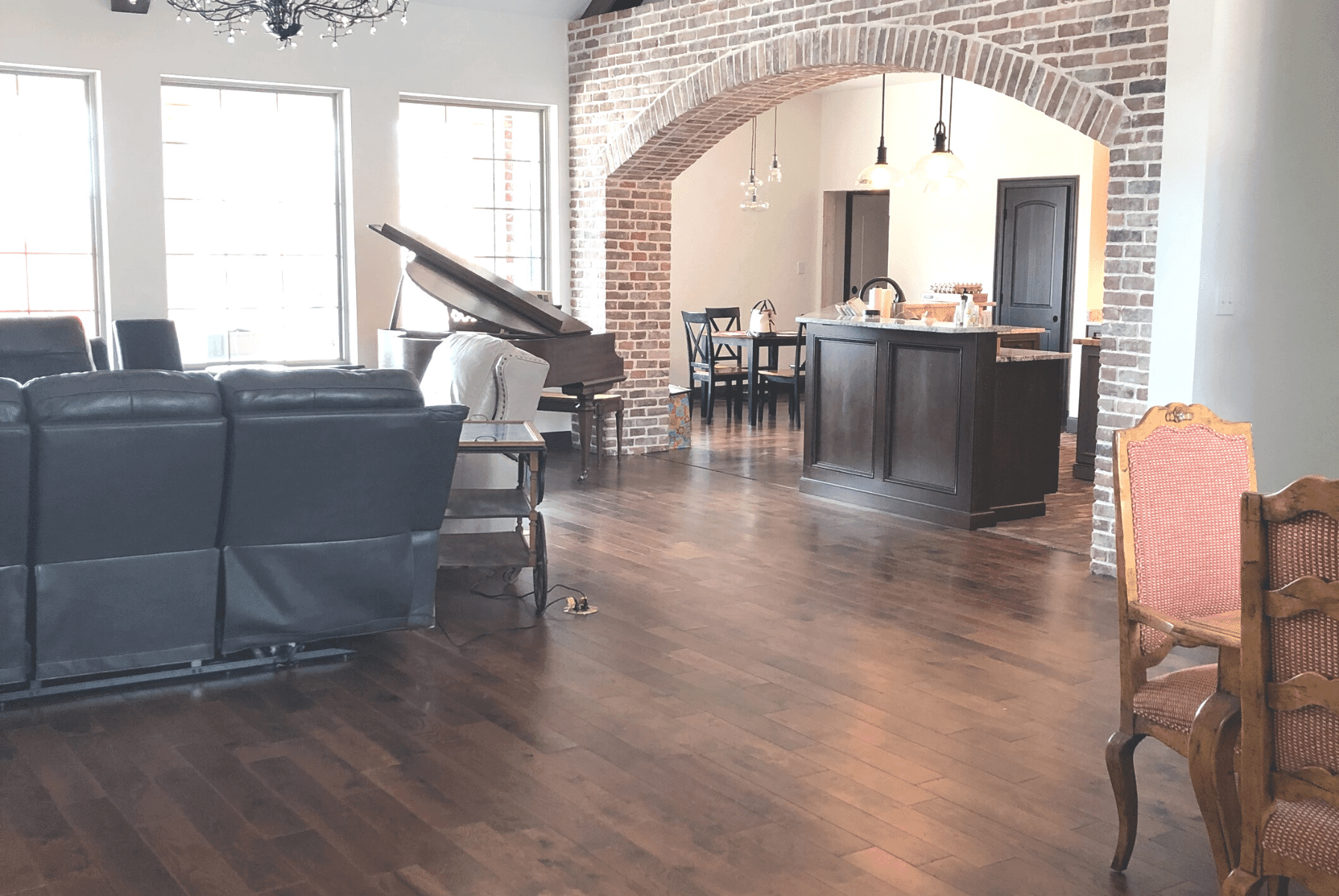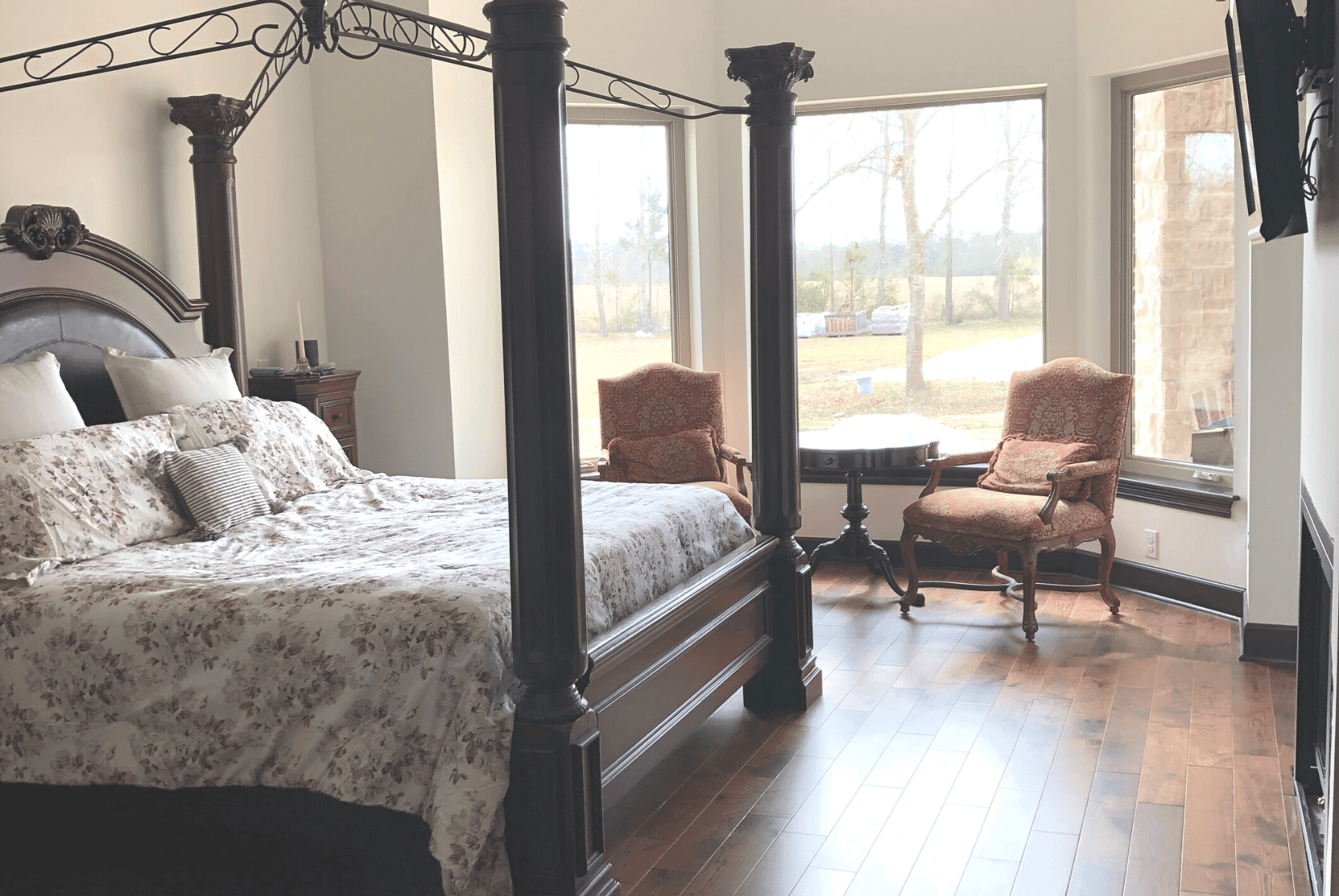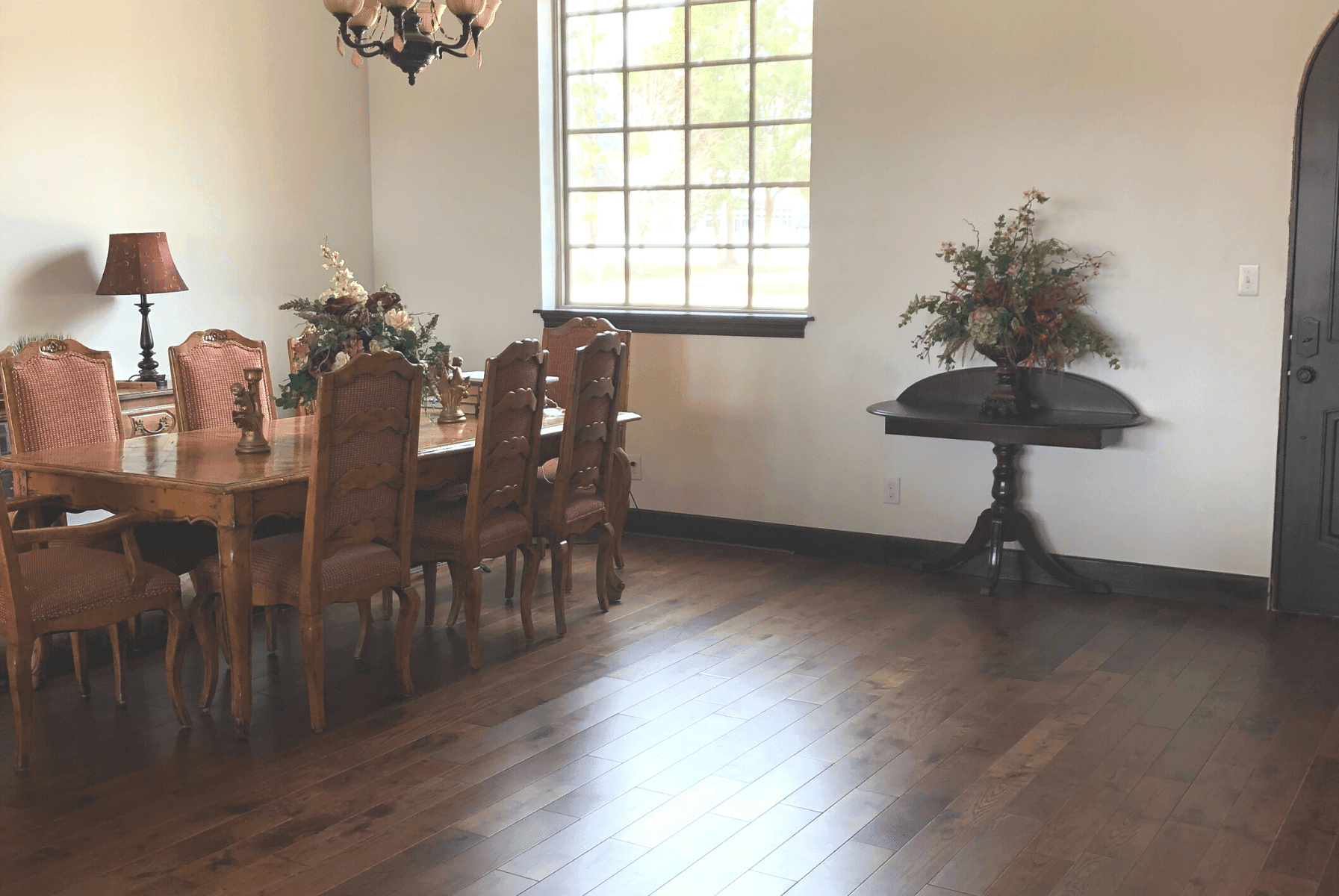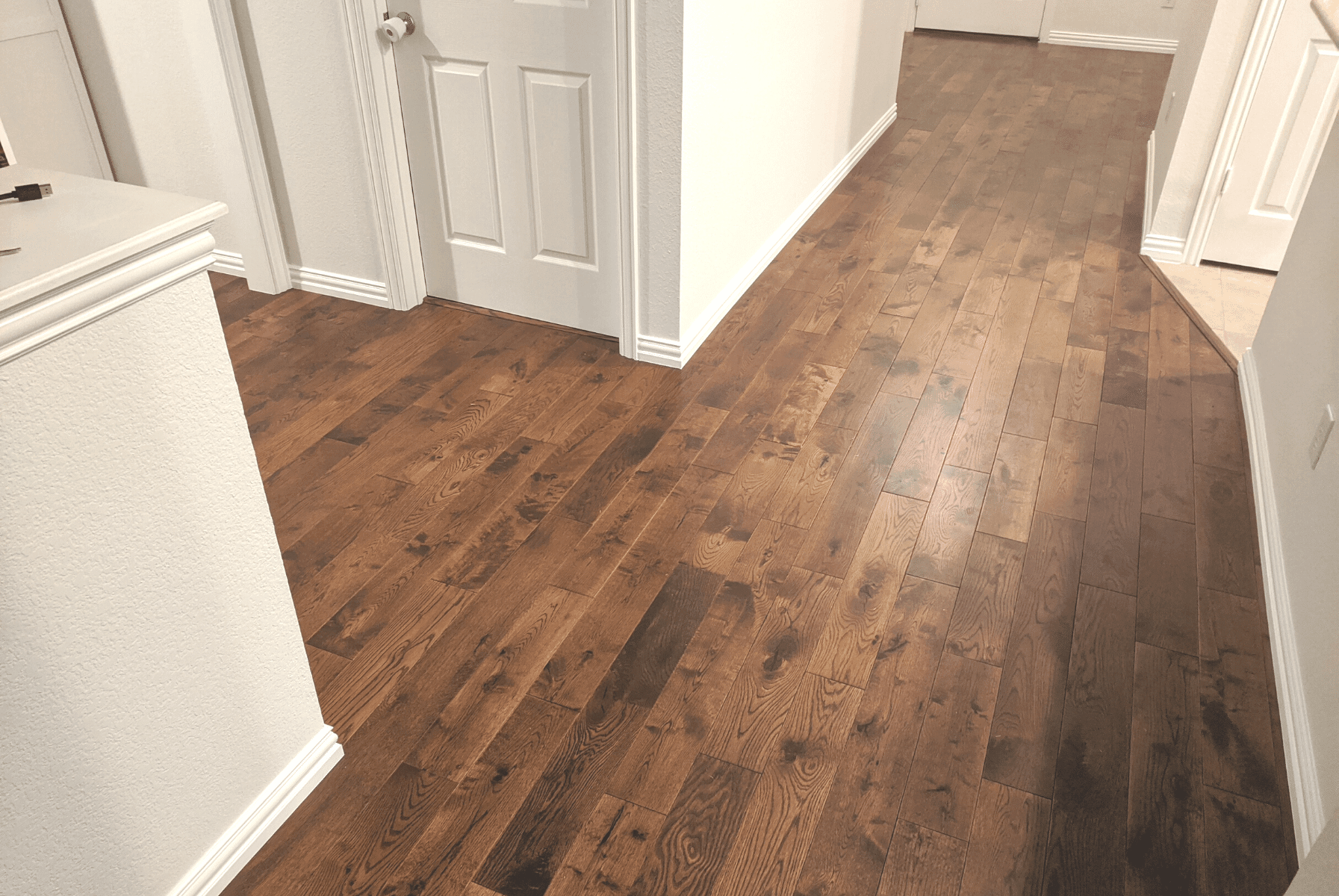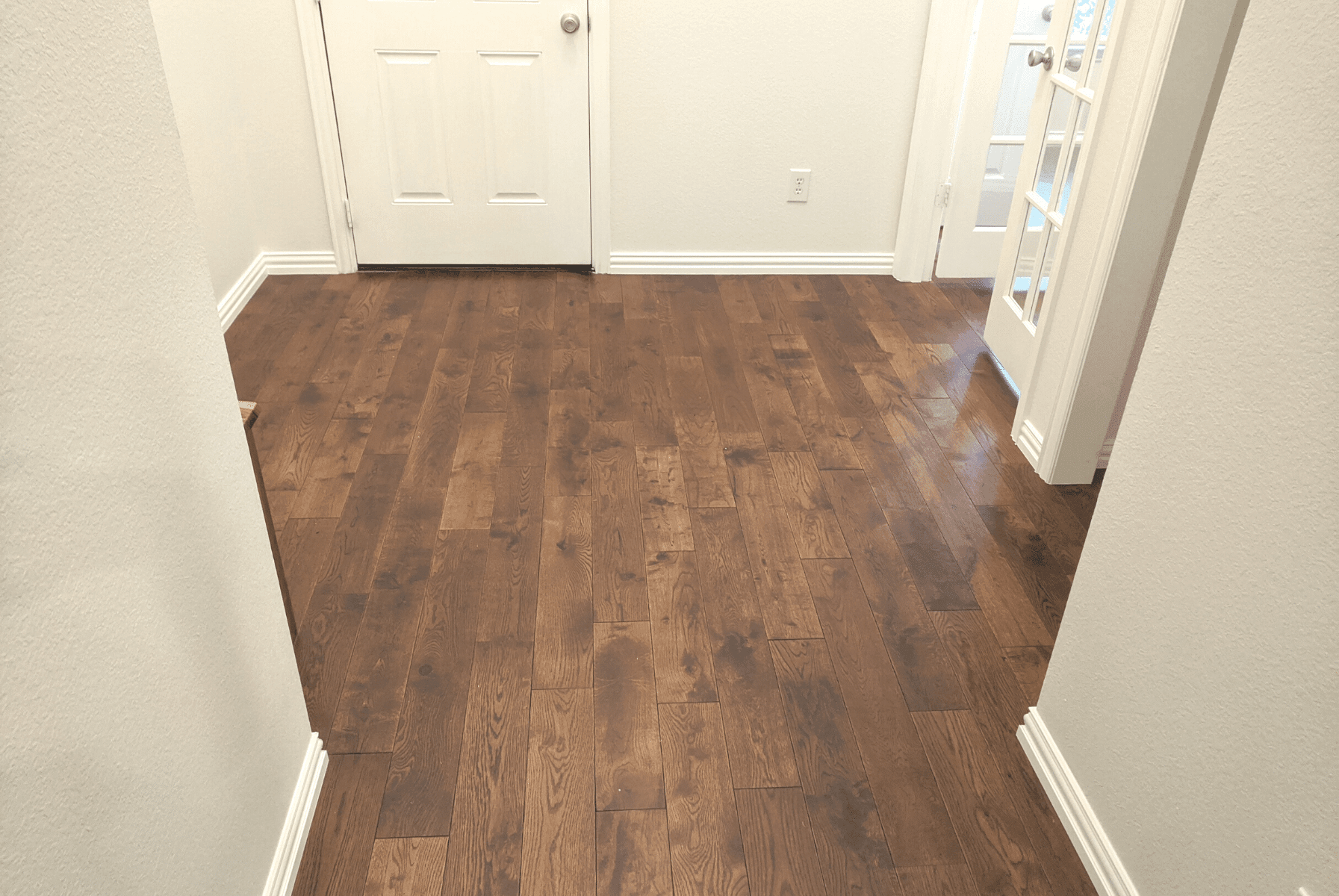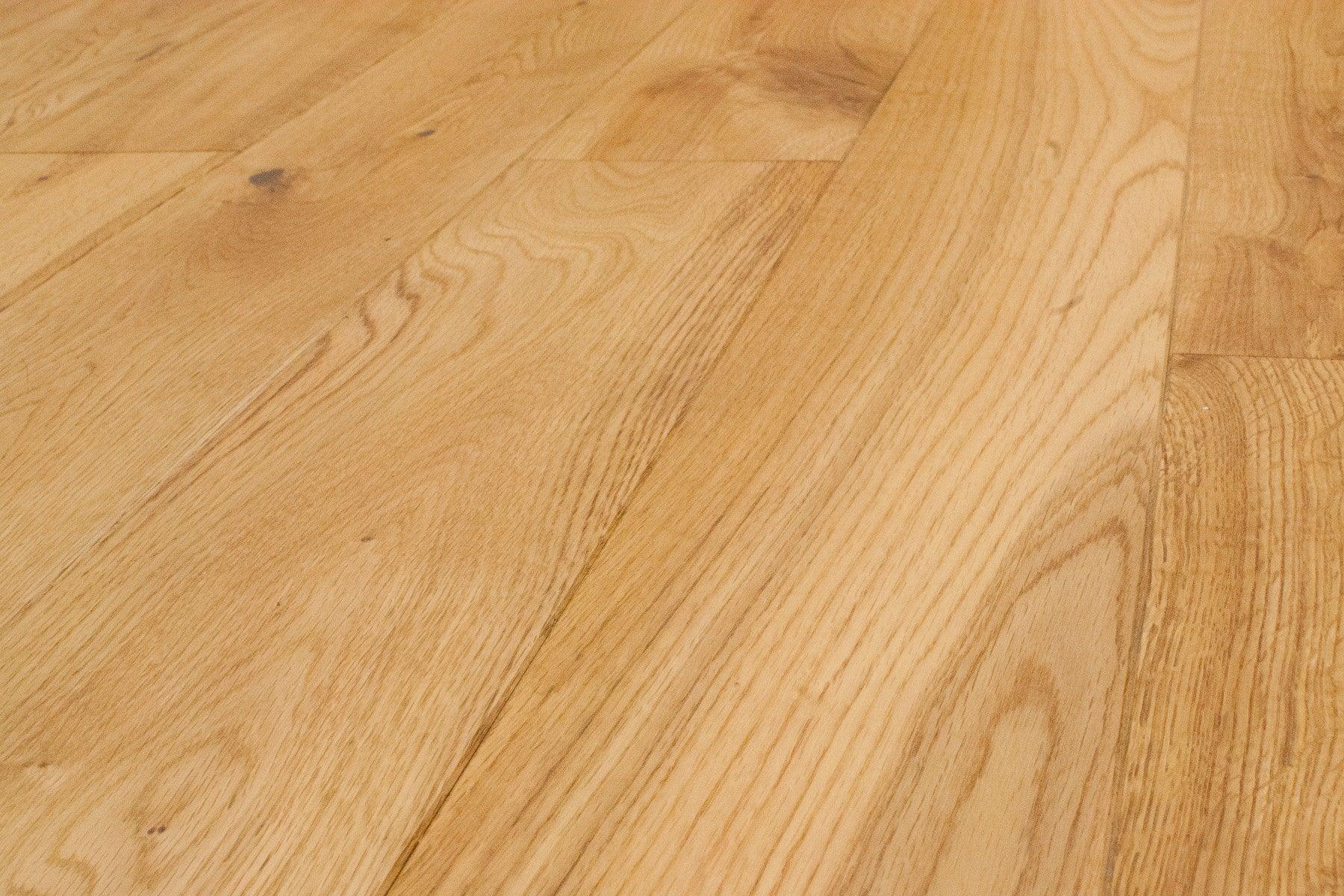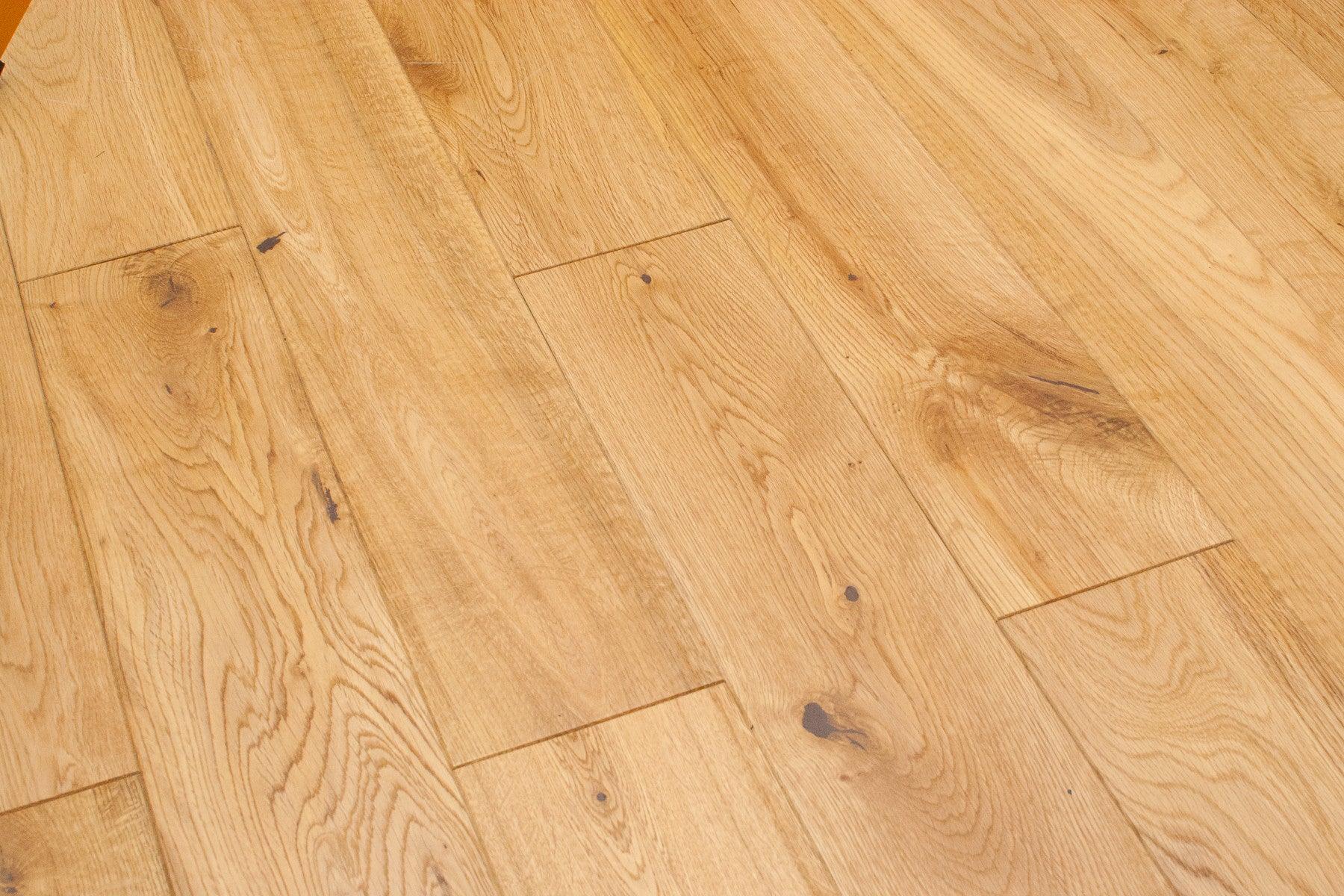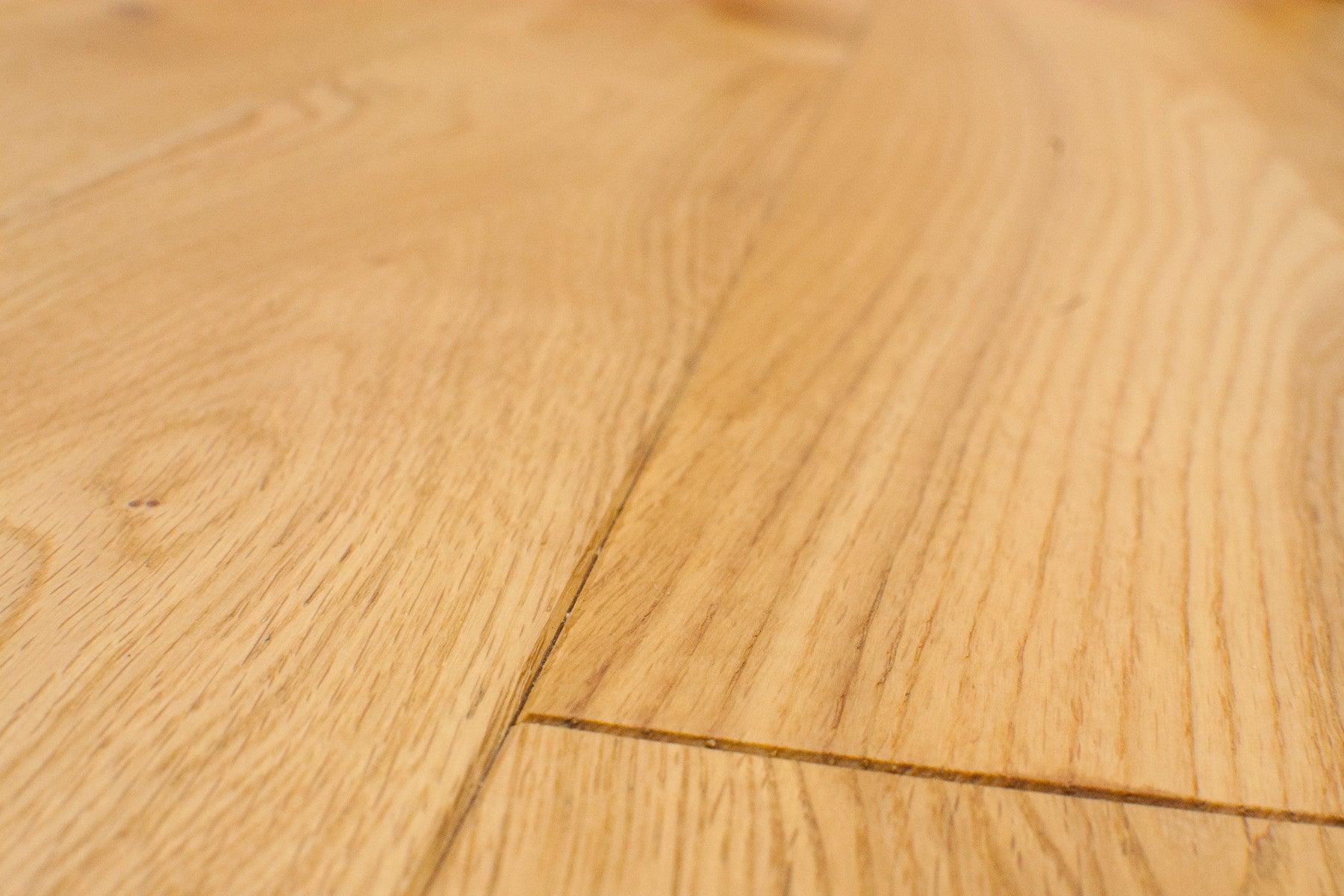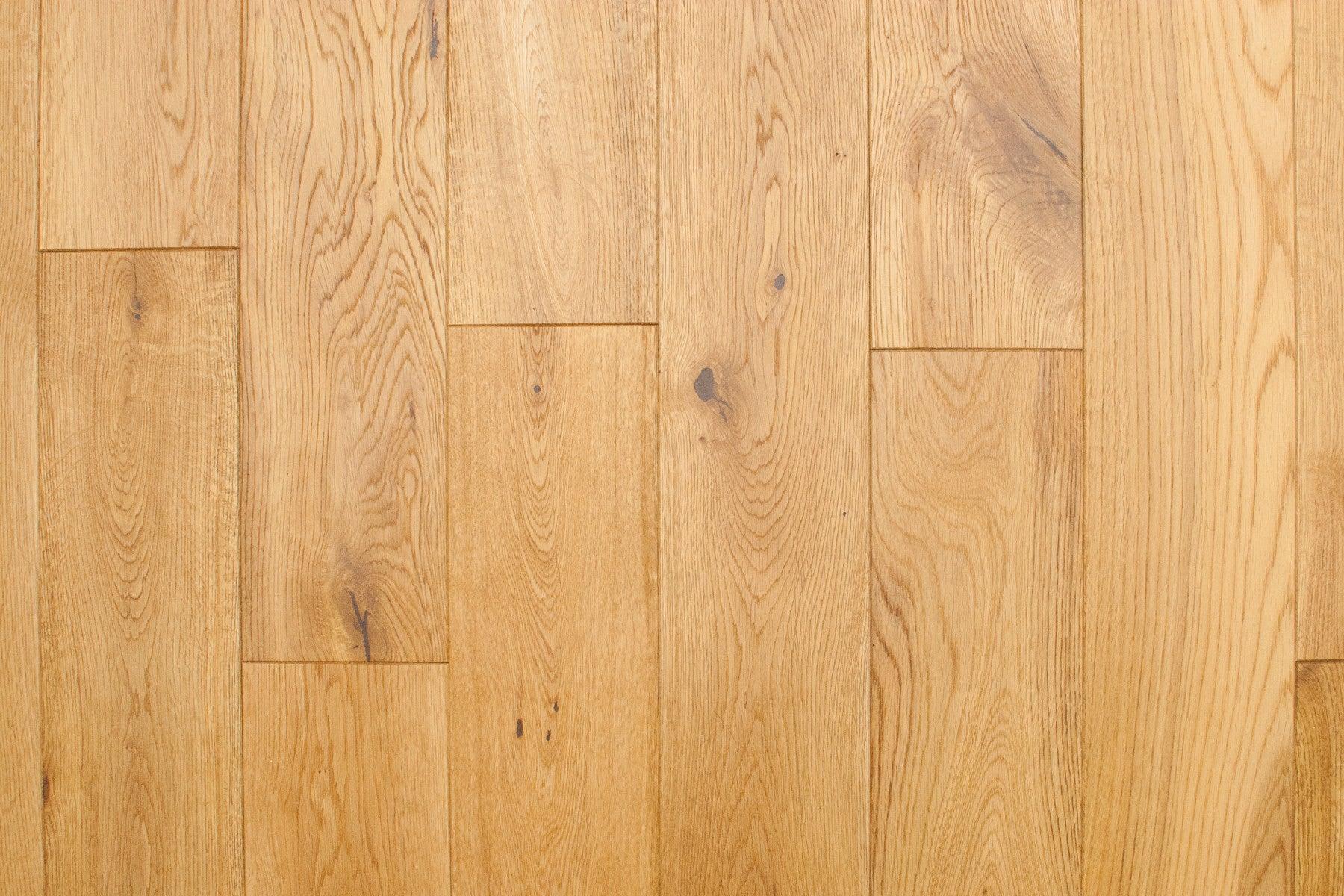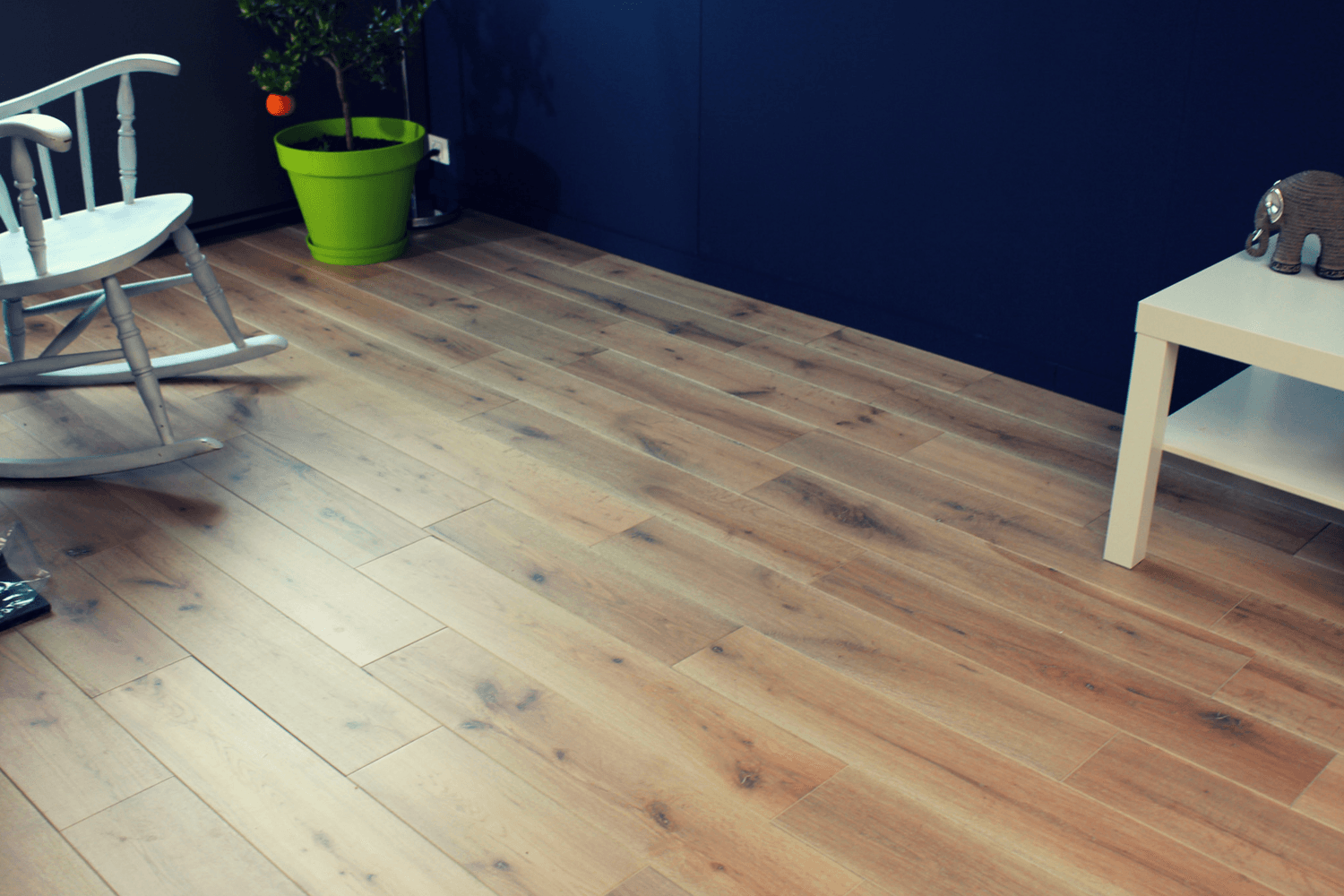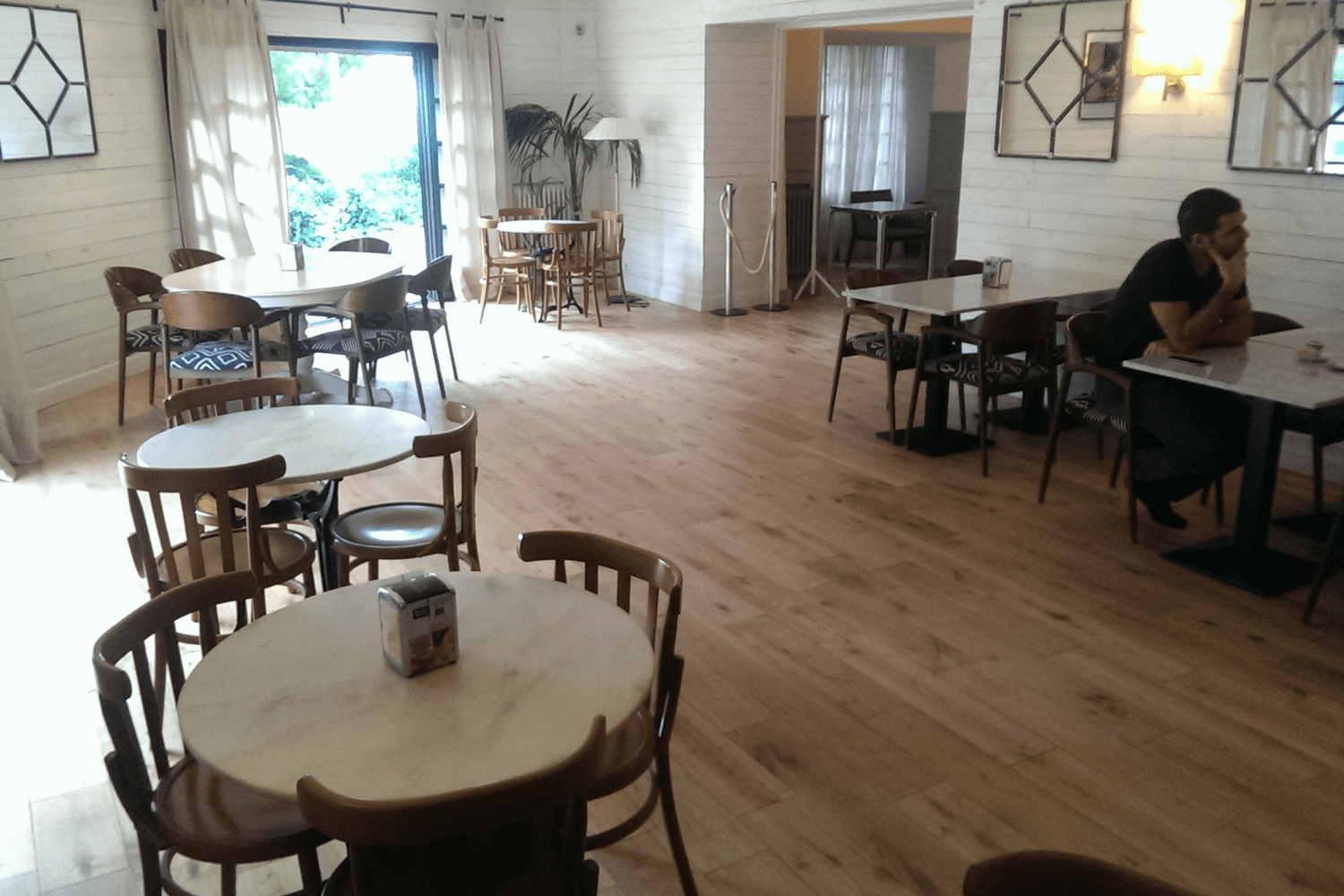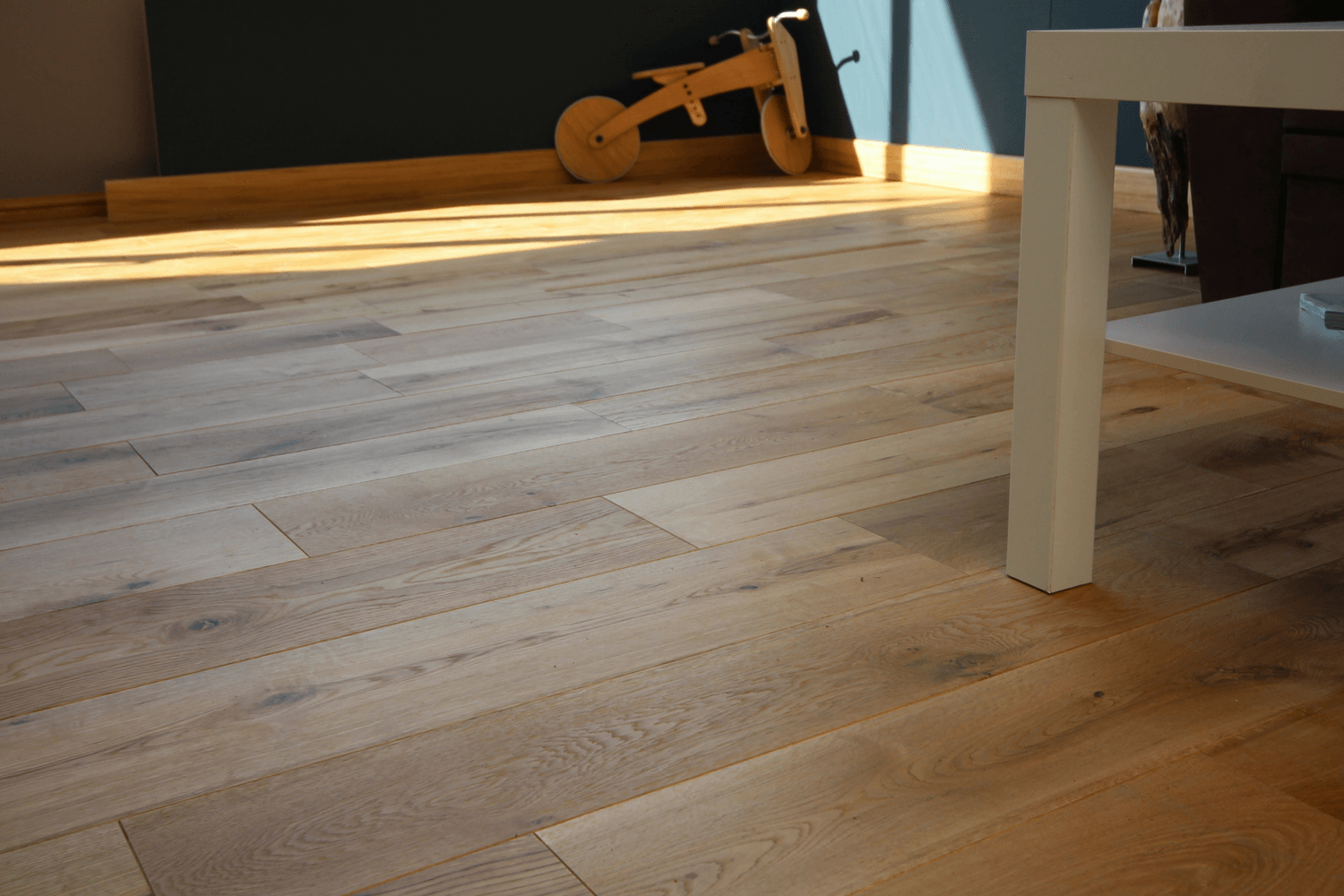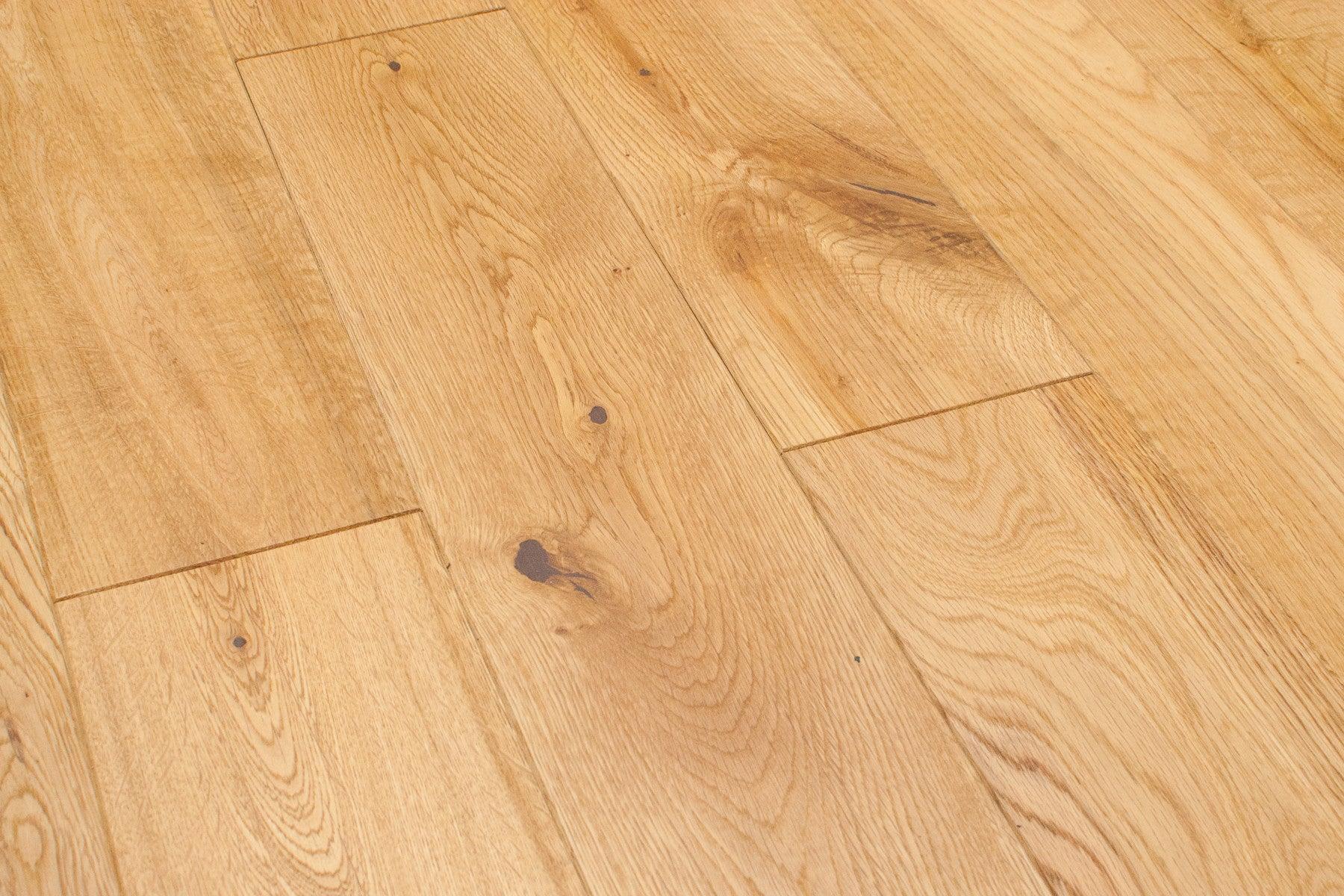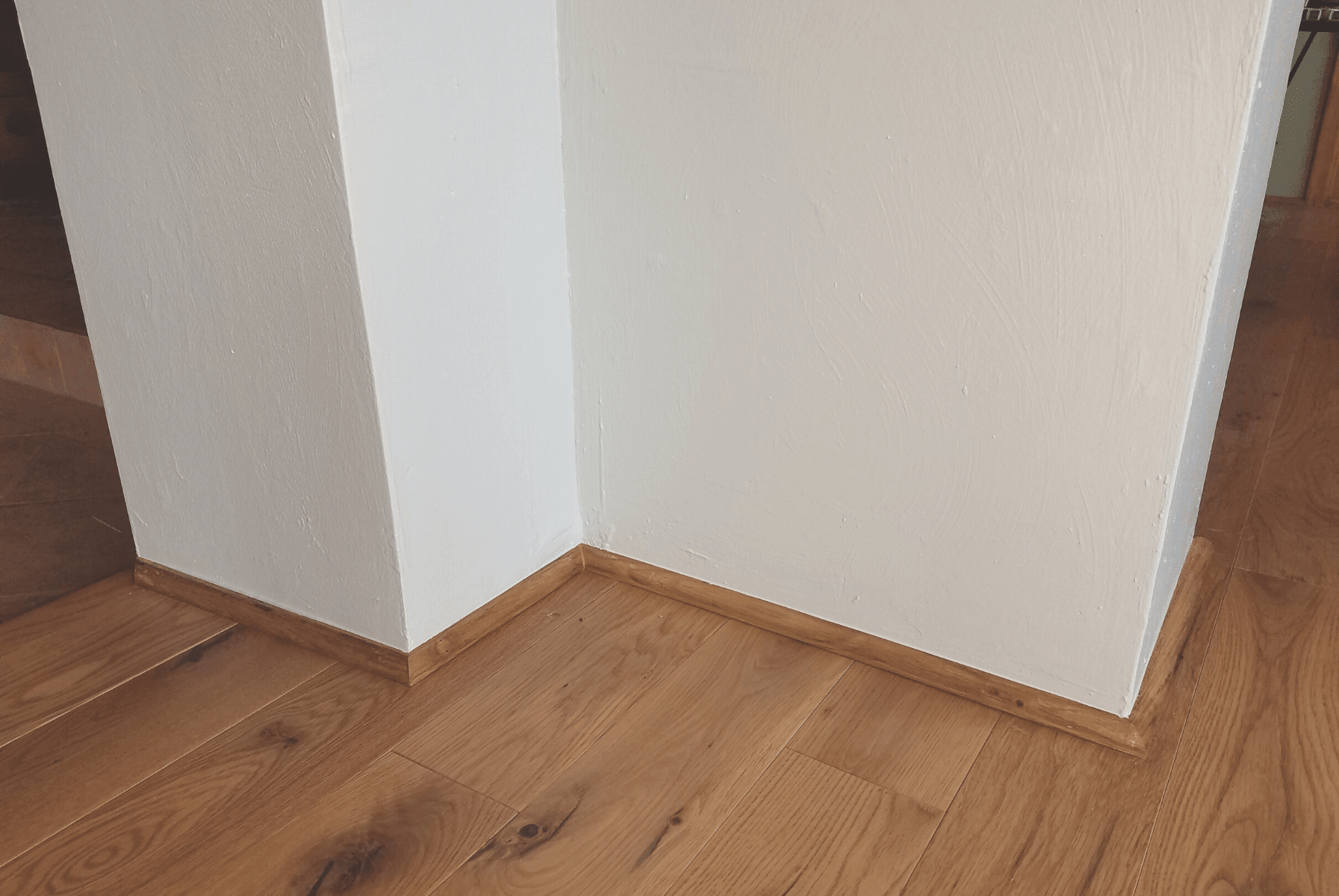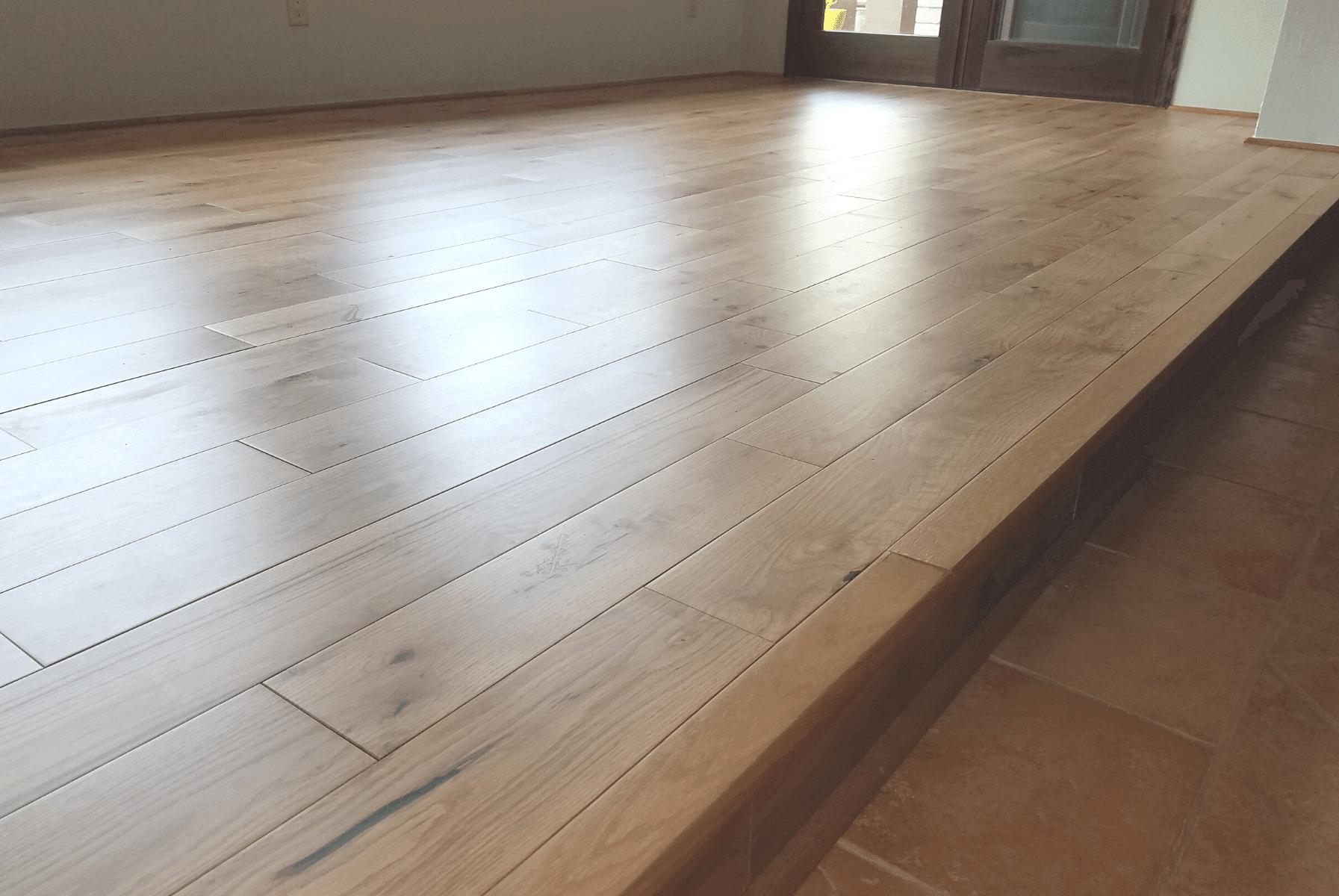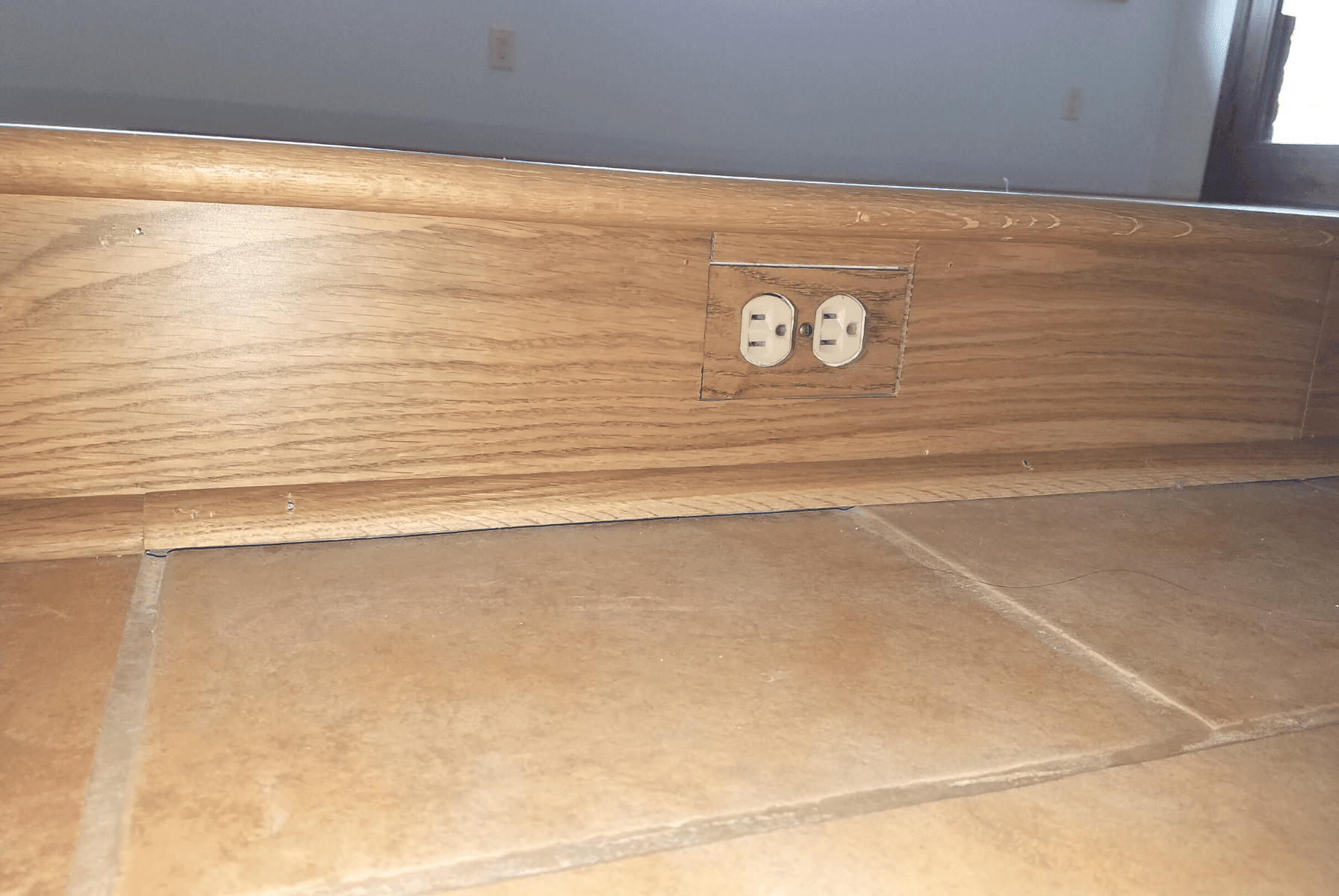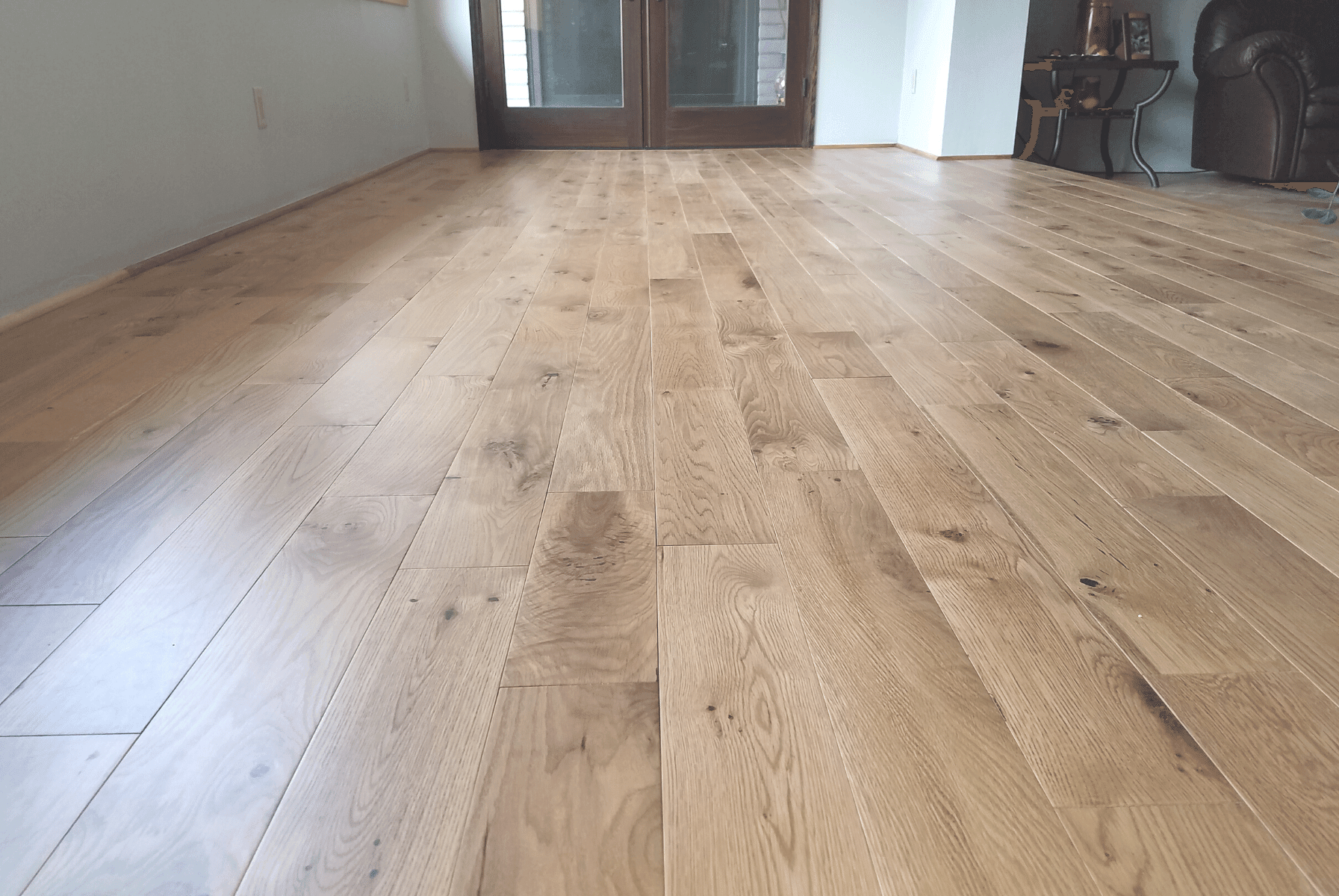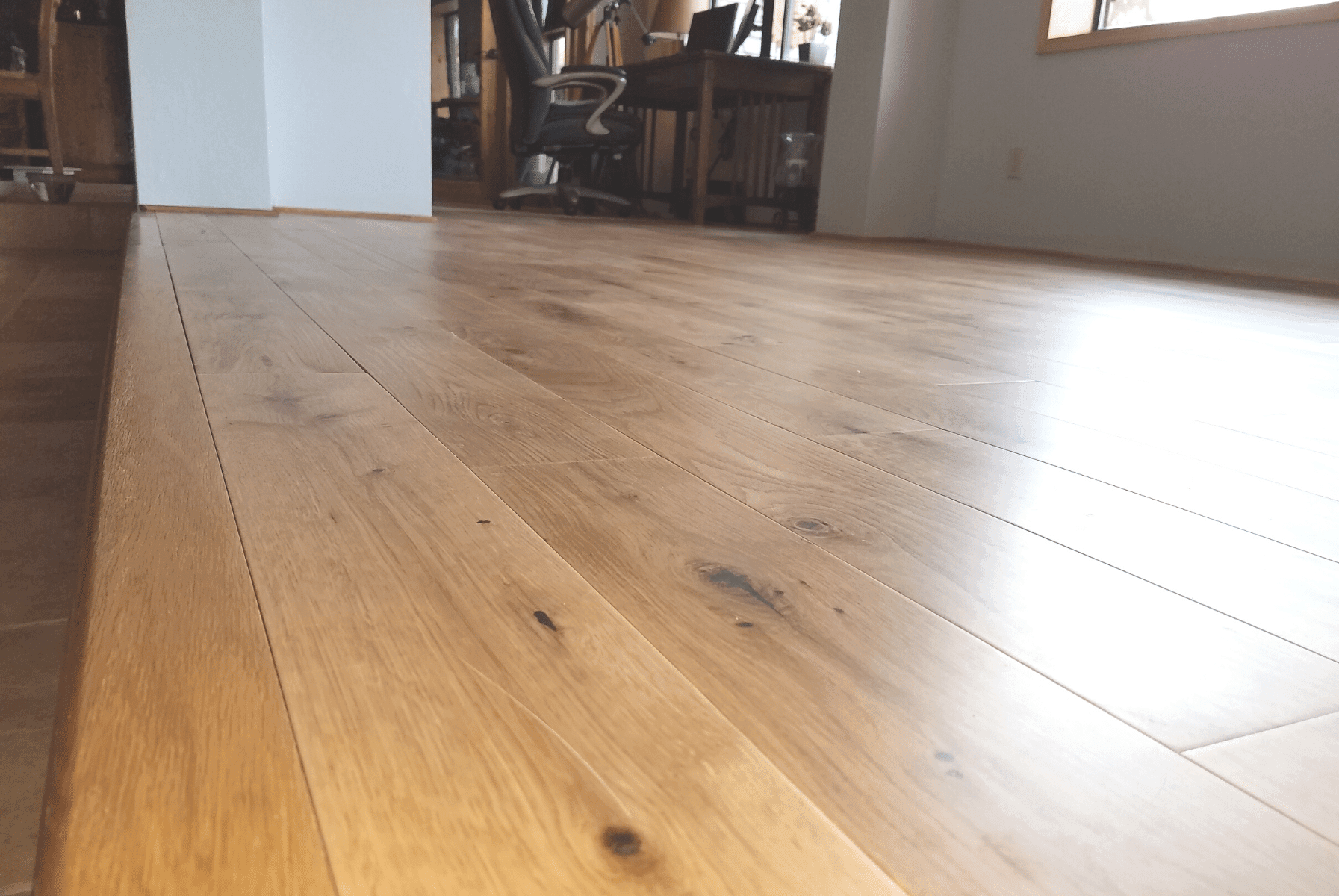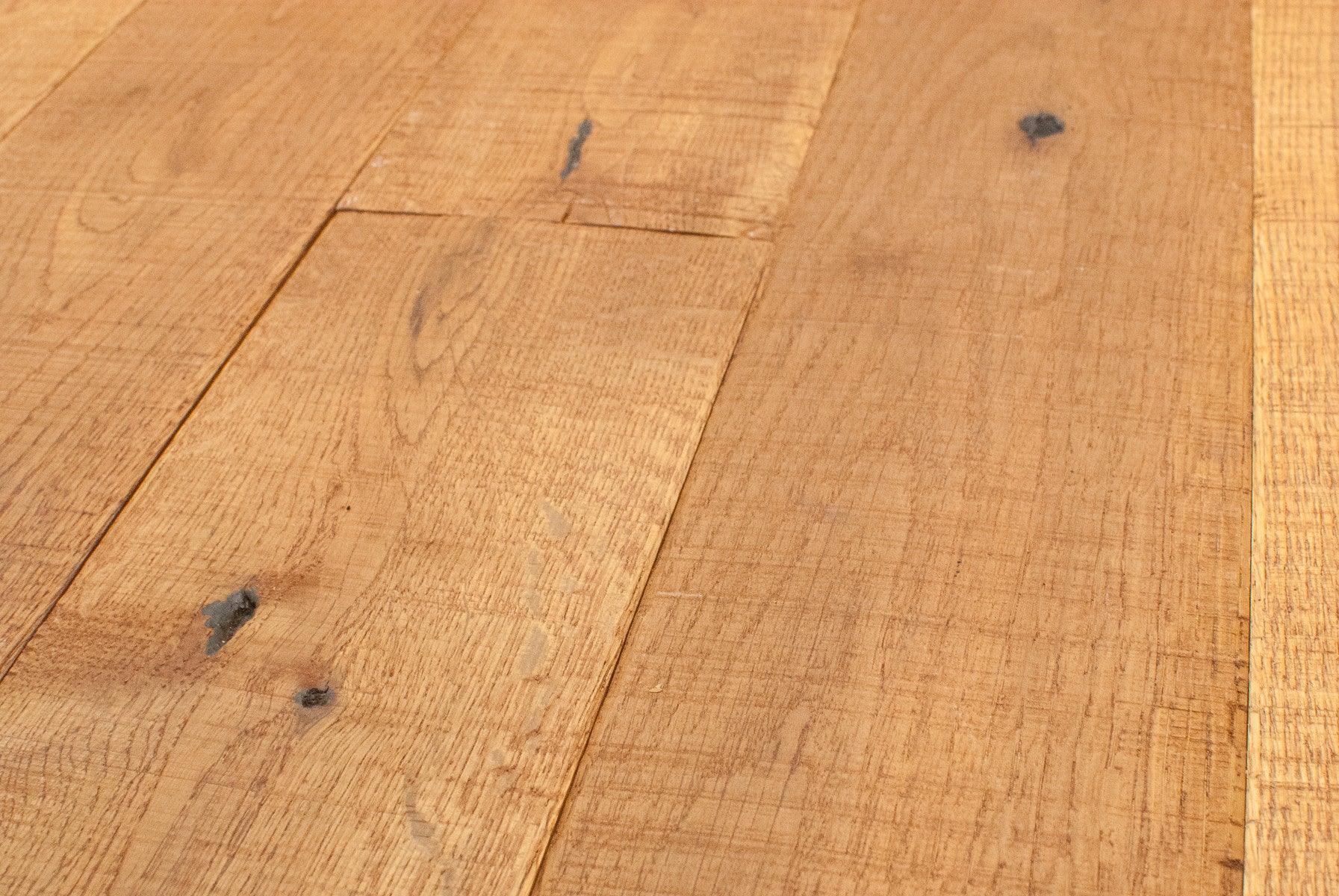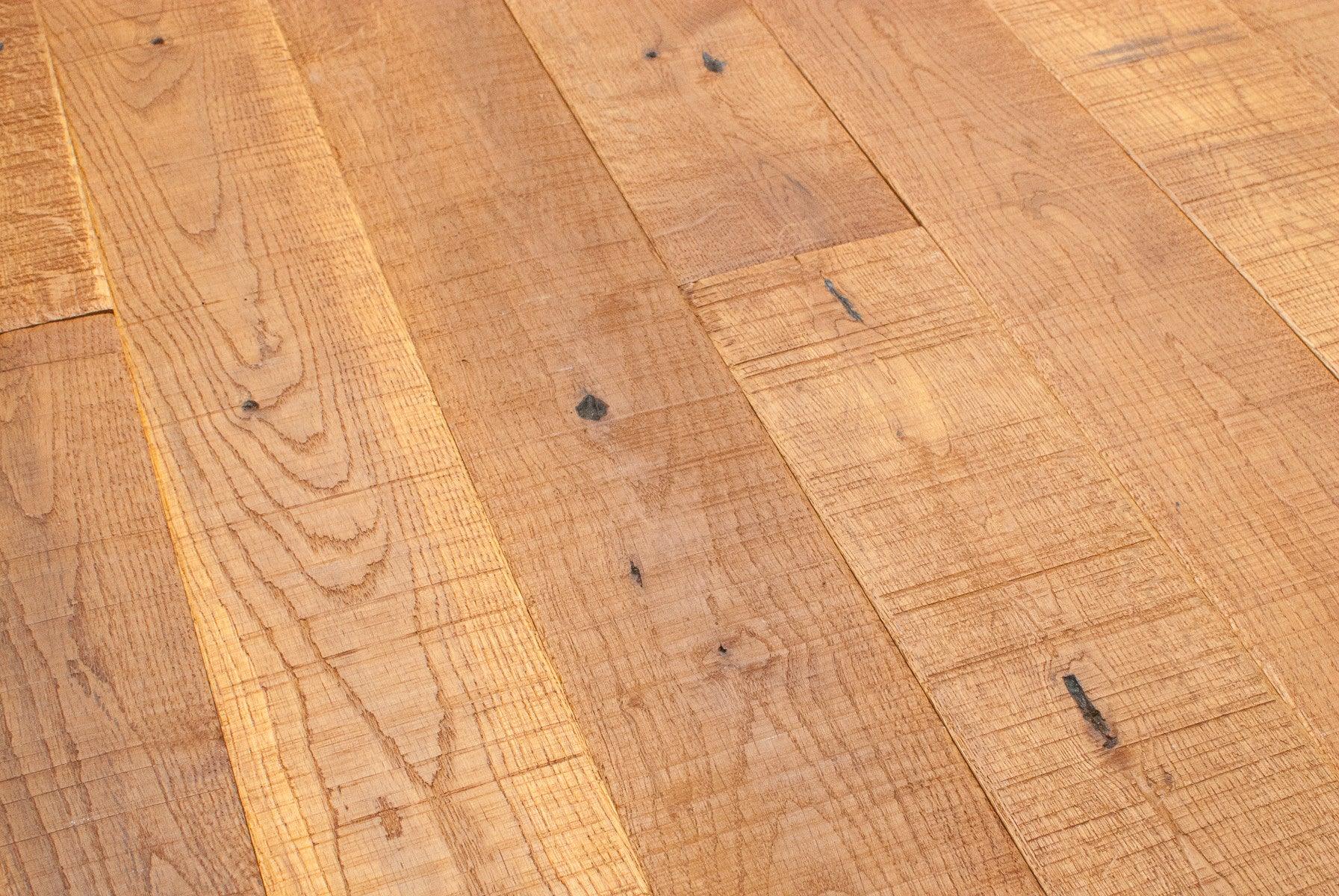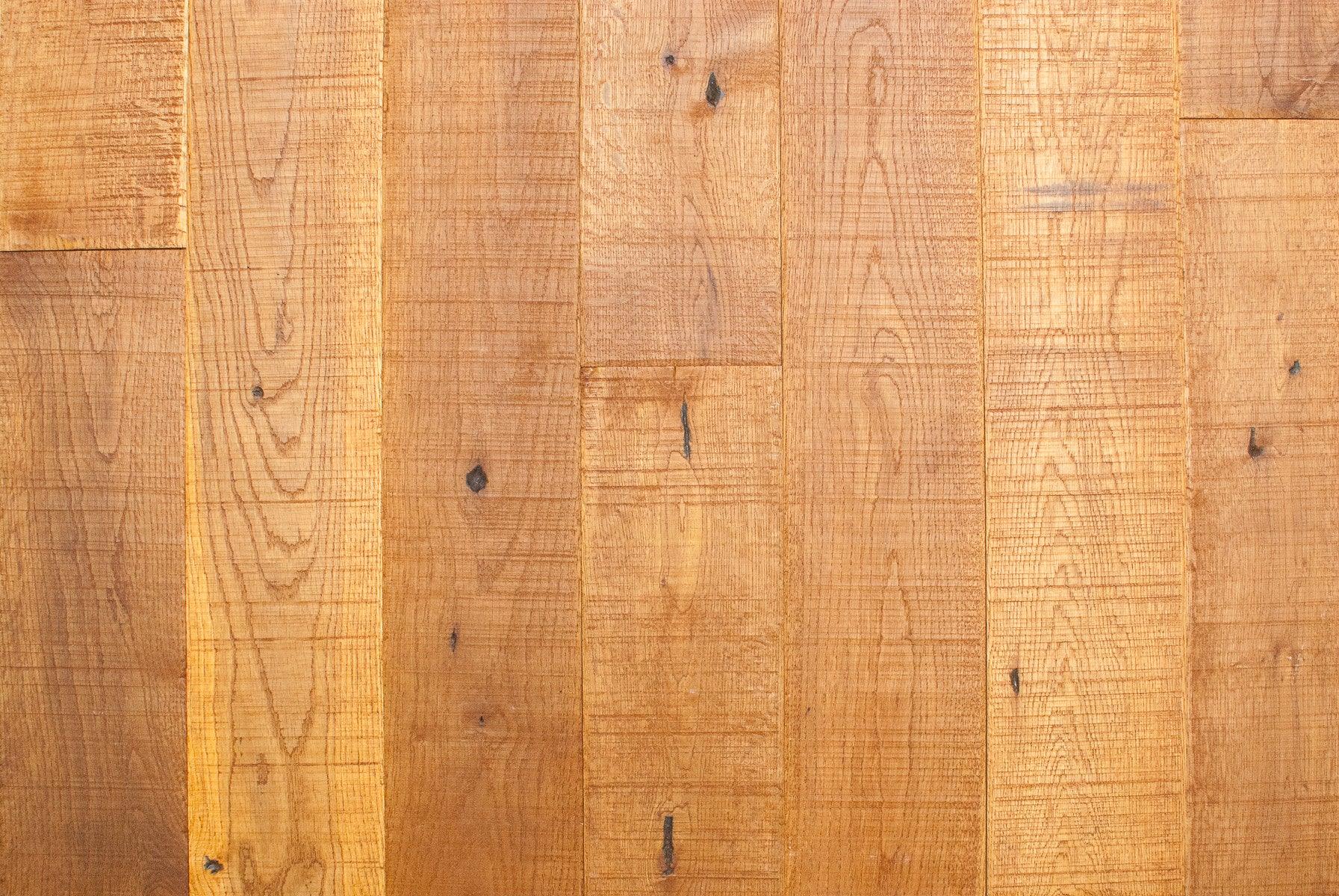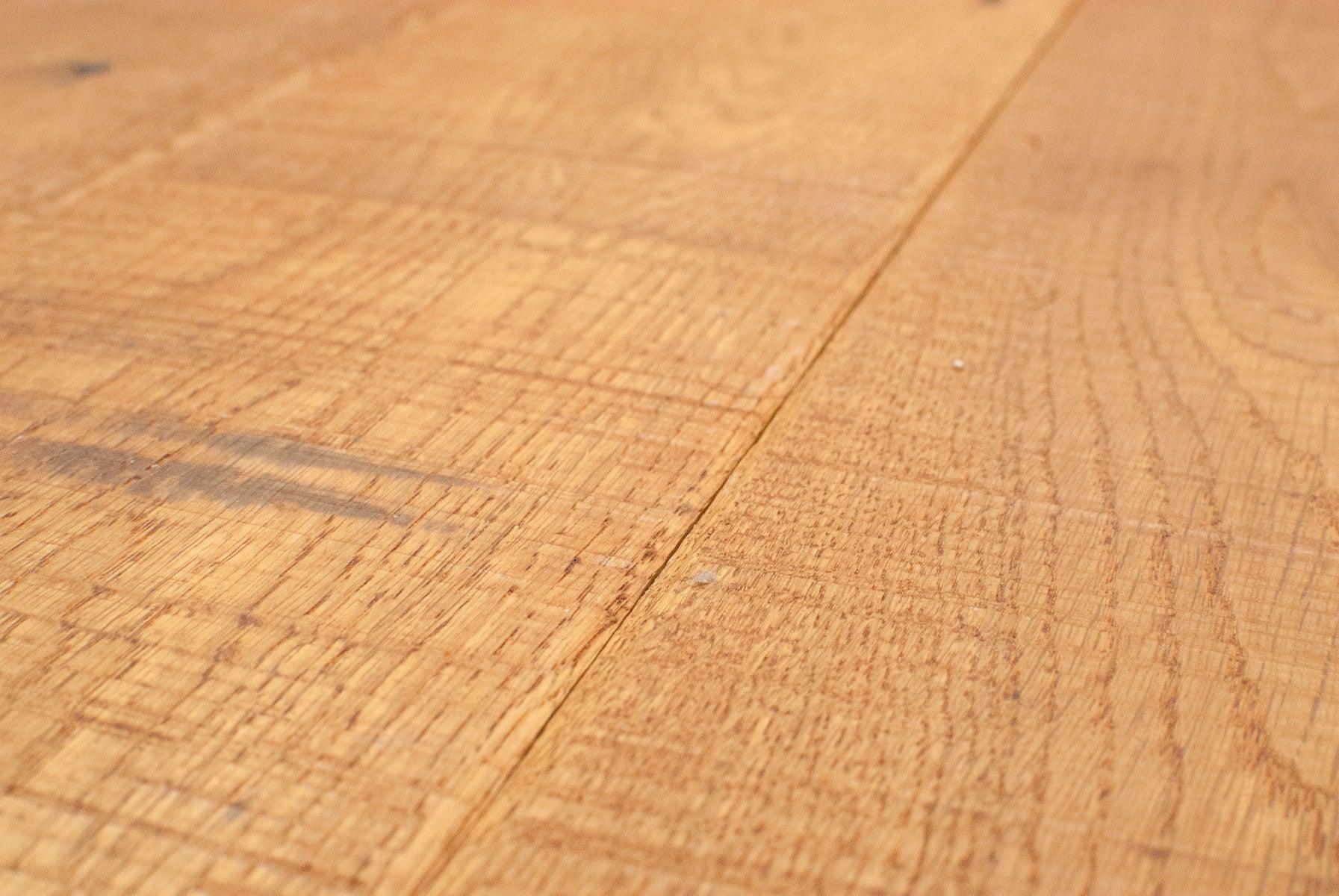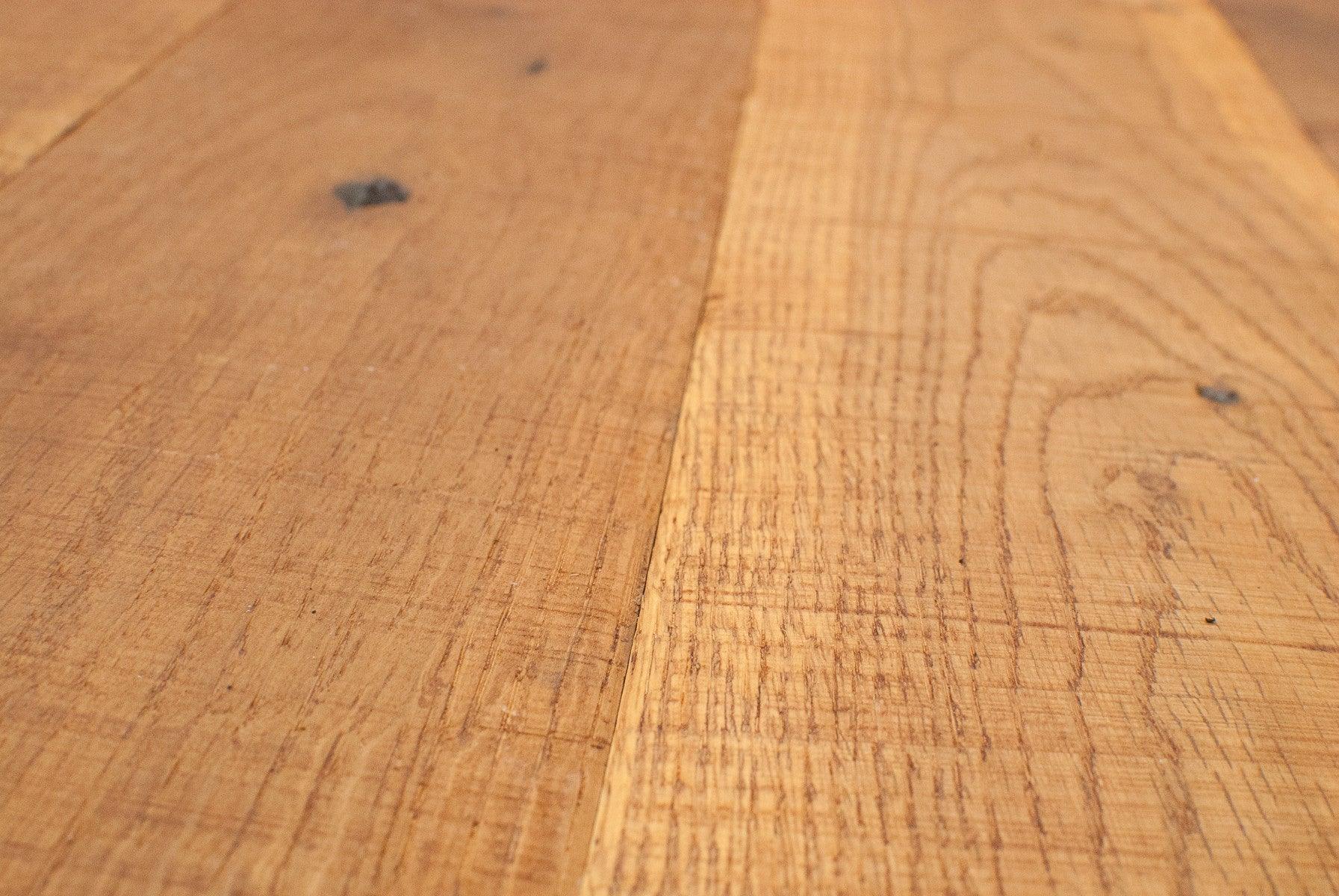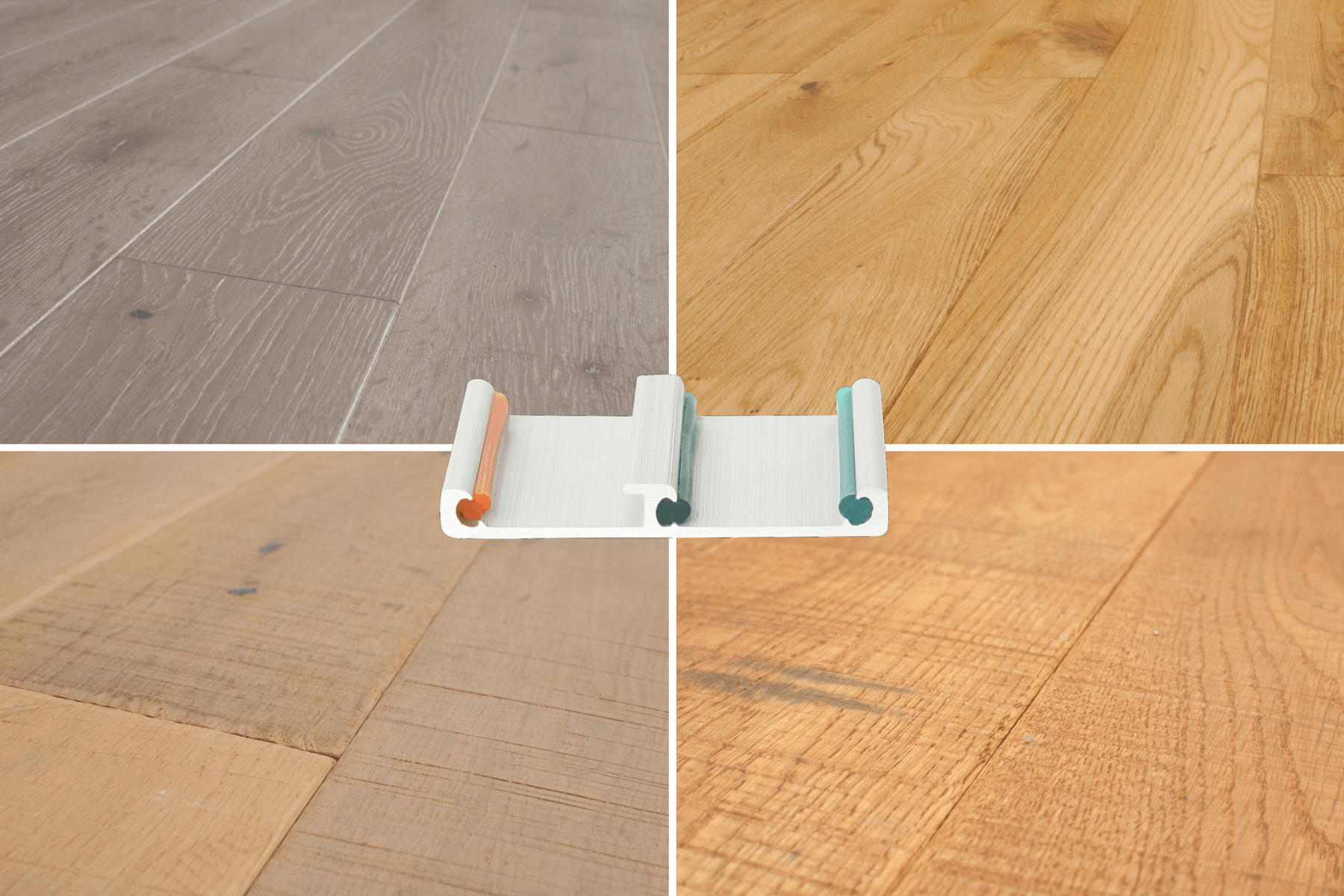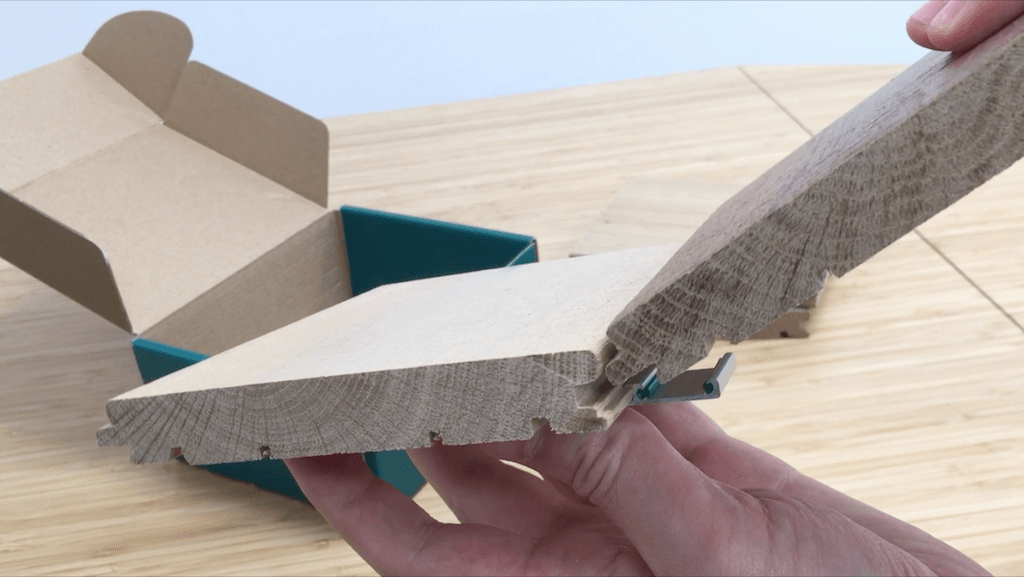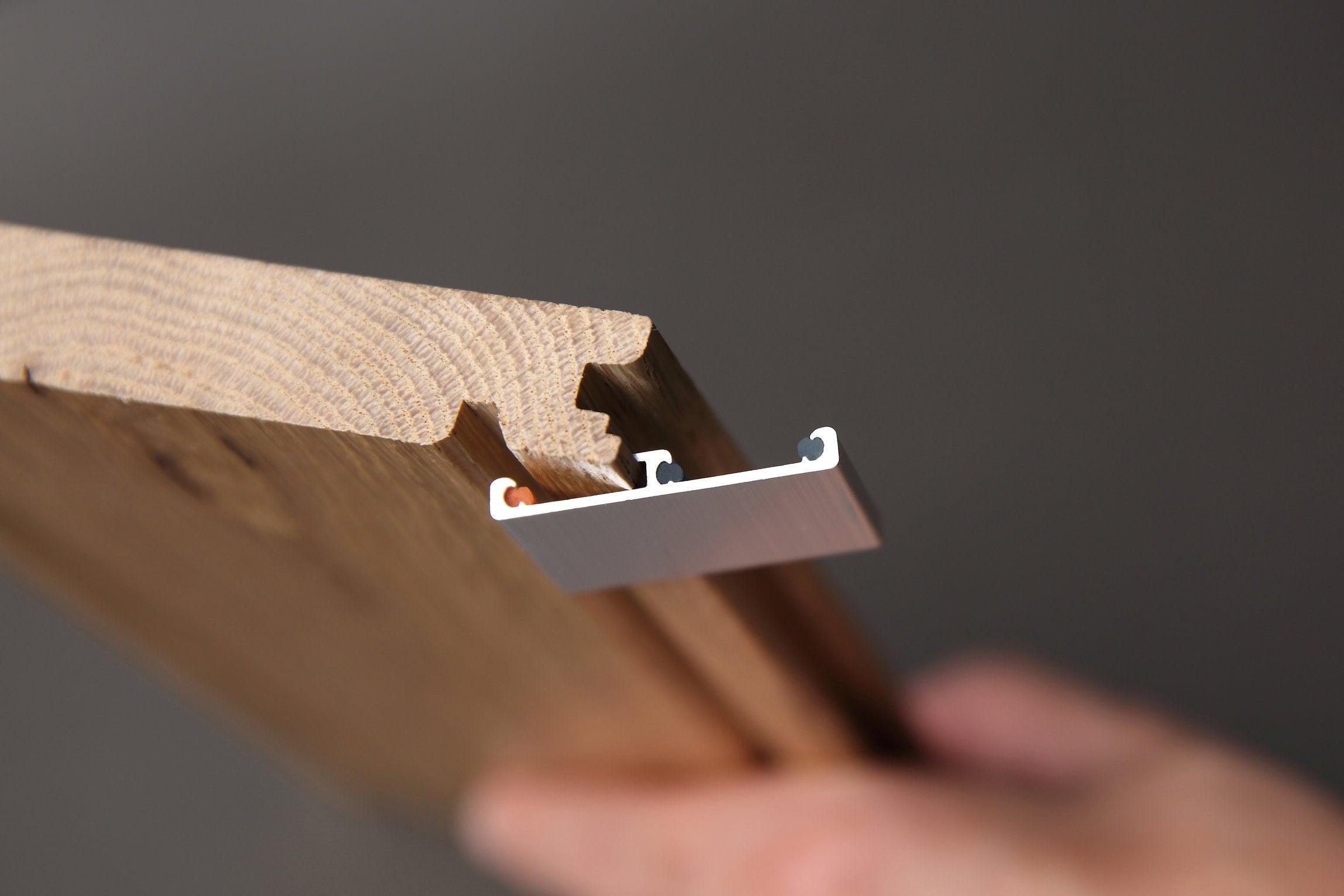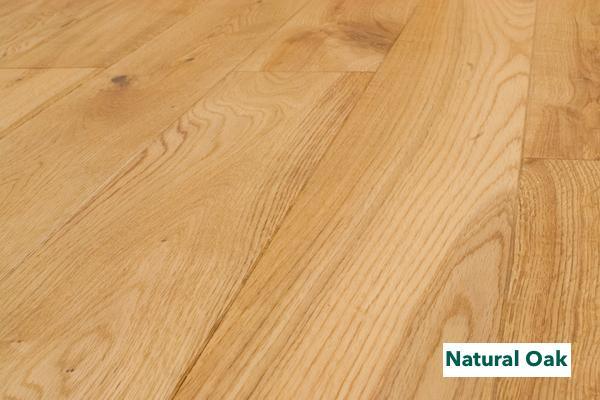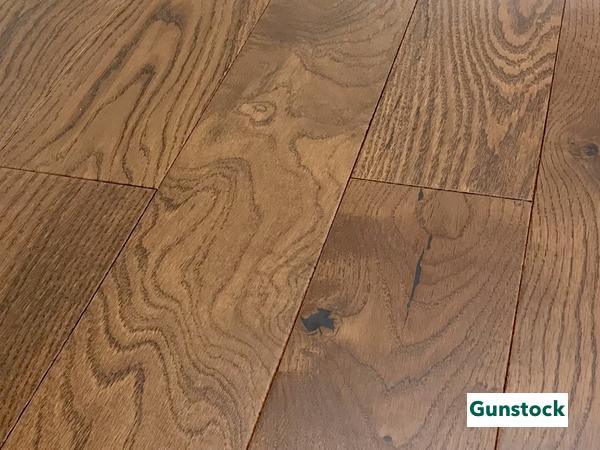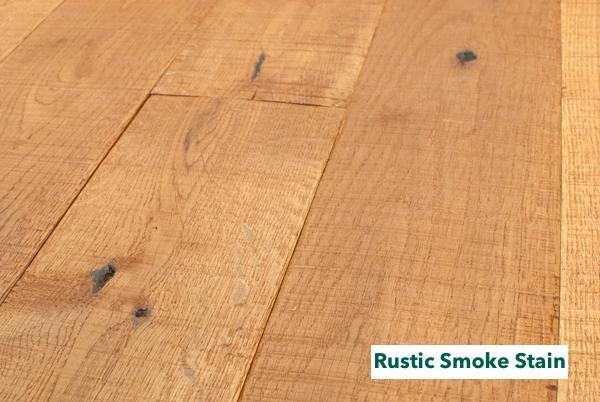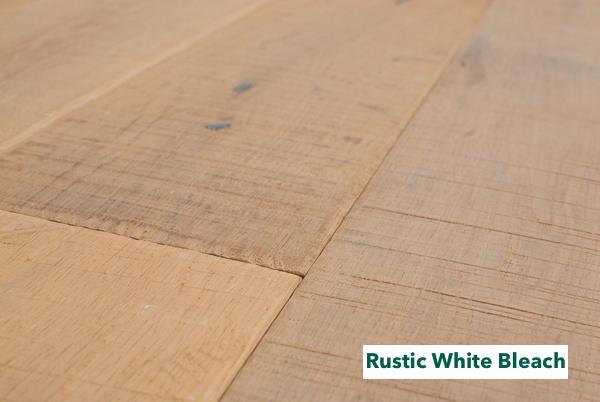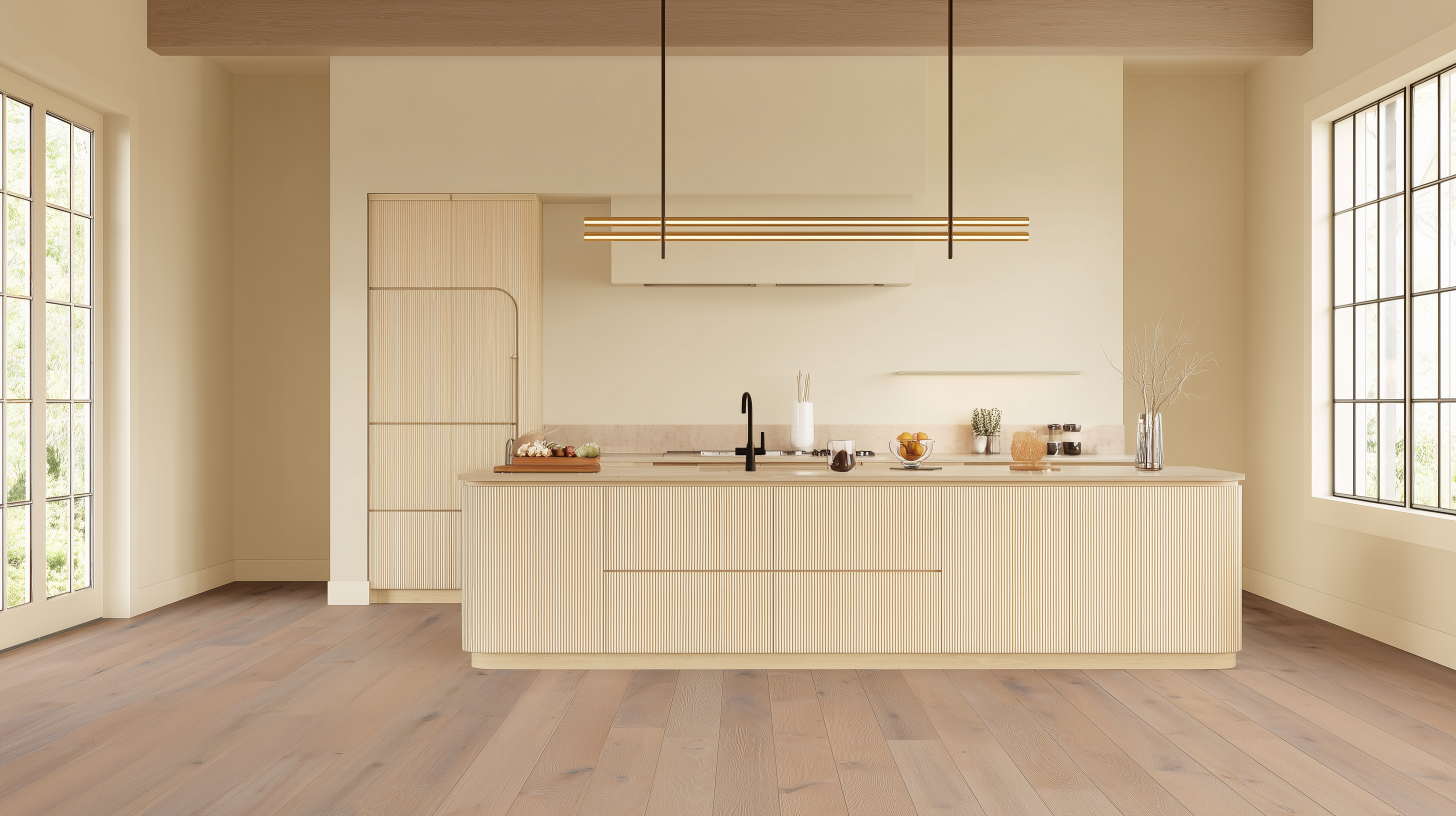Hardwood floors have a way of grounding a space, warm underfoot, elegant to the eye, and timeless in appeal. But what determines how those floors feel isn’t just the planks themselves. It’s the unseen layer beneath them: the underlayment. And its finding te best underlayment for hardwood floors that will make the world of difference.
This slim, often-overlooked layer shapes how your floor performs. It softens each step, dampens noise, insulates against cold, and protects against moisture, all essential in Canadian homes where humidity and temperature shift with the seasons.
According to BuildDirect, a quality acoustic underlayment can reduce impact noise by up to 25 to 30 decibels, depending on the material’s density. That quiet, comfortable feel isn’t a coincidence; it’s thoughtful design.
“Underlayment acts as both shock absorber and shield,” says Brett Miller, VP of Technical Standards at the National Wood Flooring Association. “It protects against sound transmission, subfloor imperfections, and environmental changes that can affect wood stability.”
For example, Easiklip’s floating click-lock system depends on a well-chosen underlayment to manage expansion, reduce sound, and maintain its solid-wood feel. A proper base also levels out minor imperfections, as shown in Easiklip’s guide on how to use floor shims to level a wood subfloor and remove squeaky floors.
The best underlayment for hardwood floors doesn’t just support; it elevates it, turning each room into a space that sounds, feels, and performs beautifully.
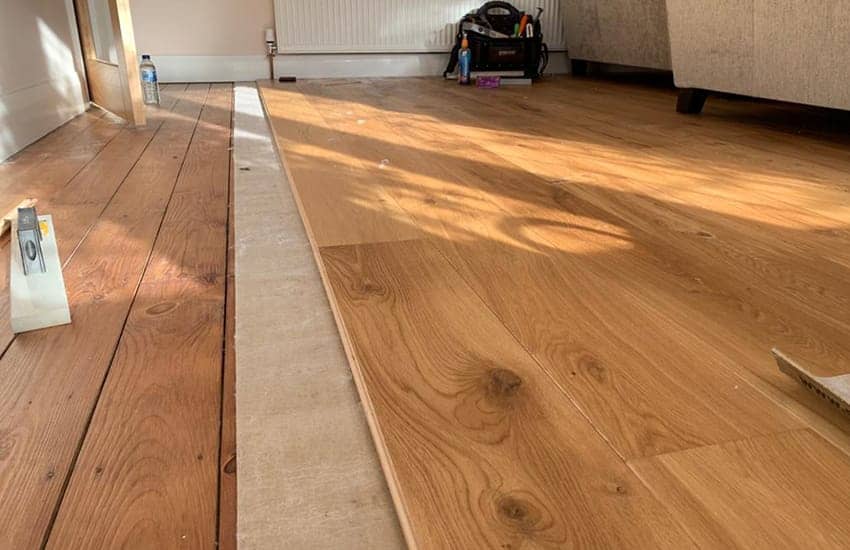
The Foundation of Feel: Why Underlayment Matters
The best underlayment for hardwood floors determines how the floor sounds, feels, and performs. It cushions each step, calms echoes, and shields the boards from moisture, essential in Canadian homes where humidity and temperature swing season to season.
For acoustics, dense underlays meaningfully cut impact and airborne noise. As this primer on IIC and sound transmission explains, assemblies targeting IIC 60 and up deliver noticeably quieter floors in multi-level homes. On moisture, hidden vapour from concrete is the silent failure point; Wagner Meters outlines best-practice testing methods (ASTM F2170 RH probes and F1869 calcium-chloride) before any floor goes down
Thermal comfort matters too. Natural Resources Canada notes that basements can account for about 25 percent of a home’s heat loss, underscoring the value of insulating layers underfoot in below-grade spaces.
When paired with a floating system such as Easiklip’s clip-in solid oak, underlayment also helps manage natural wood movement while preserving that grounded, solid-wood feel.
Understanding the Three Performance Priorities
Not all underlayments behave the same. The best underlayment for hardwood floors balances comfort, sound, and moisture control for your space.
Comfort underfoot
Underlayment adds resilience and subtle insulation, reducing foot fatigue and cold transfer through slabs. Over concrete or in cooler rooms, a slightly denser underlay improves day-to-day comfort. NRCan’s guidance on basement heat loss reinforces why that insulating buffer matters.
Sound control and acoustics
Impact noise is the giveaway in hard-surface rooms. Acoustic engineers at BKL explain how footstep energy transmits through rigid surfaces and why softer, denser layers help tame it. For benchmarks, see how IIC/STC ratings map to real-world quiet, higher is better for multi-storey living. If you want definitions of STC/IIC/ΔIIC in one place, this quick glossary is useful.
Moisture protection and stability
On-grade and below-grade installs demand a vapor-resistant underlayment. Wagner’s guide shows how to test slabs correctly so you can spec the right barrier before hardwood touches concrete. For a homeowner-friendly reminder that underlay affects feel and sound even with laminates, Home Depot Canada notes that thin underlayment helps create a more realistic step and softer underfoot experience.
Comparing Underlayment Materials by Performance
Choosing the best underlayment for hardwood floors comes down to three key things, how it feels, how it sounds, and how it protects. Each material offers a different balance of comfort, sound insulation, and moisture control.

Foam Underlayment—Lightweight Comfort
Foam is one of the most common choices for floating floors like Easiklip’s click-lock system. It cushions footsteps, adds flexibility, and smooths over minor subfloor imperfections.
A premium option such as ROBERTS AirGuard 5-in-1 Underlayment (Home Depot Canada) combines foam comfort with a built-in vapour barrier and antimicrobial protection. It’s ideal for DIYers who want simplicity without compromising performance.
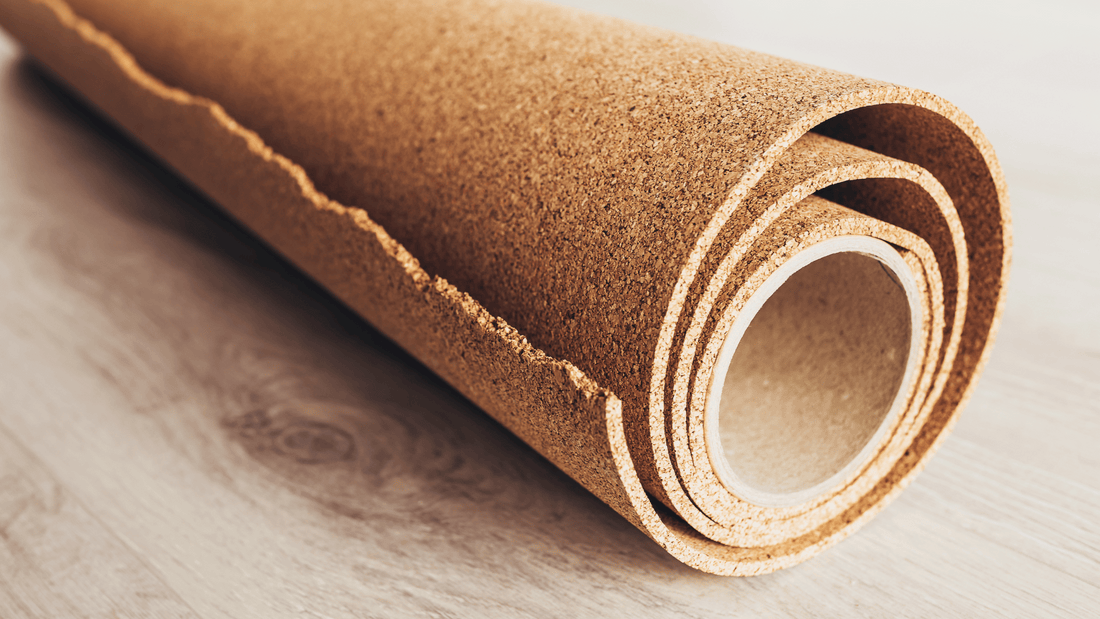
Cork Underlayment – Natural Quiet
Cork is the sustainable choice. It’s dense enough to reduce impact noise while adding warmth and a touch of softness underfoot.
Because cork is naturally antimicrobial and renewable, it’s become popular in eco-minded builds. As BuildDirect explains, cork’s cellular structure absorbs vibration energy, perfect for upper floors and condos where footsteps echo most.
Keep in mind that while cork resists moisture, it’s not waterproof. For basement or on-grade installations, it should be paired with a 6-mil vapour barrier film to protect the hardwood.

Rubber Underlayment – Durable and Dense
Rubber is built for resilience. It offers excellent sound absorption, especially for multi-storey living, and performs well in both dry and mildly humid environments.
Products such as Technofloor Acoustic Membrane Underlayment (RONA) are engineered to meet strict acoustic standards while remaining easy to install. The density helps maintain floor stability, keeping hardwood level and secure even under heavy traffic.
Felt Underlayment – Plush and Premium
Thick felt underlayment creates a more luxurious feel underfoot while delivering top-tier sound reduction. It’s particularly suited for high-end hardwood installations or spaces where a quiet, cushioned atmosphere matters.
Felt also evens out small subfloor irregularities, making it a great match for solid wood planks that need consistent support.
Combination Underlayments – Moisture and Sound in One
If your project is on a concrete slab or in a basement, a combination underlayment, one that includes both vapour protection and acoustic performance, is the safest choice.
Options like QuietWalk Plus Underlayment use recycled fibres and a built-in moisture barrier to prevent water vapour from reaching the floor while still providing comfort and sound absorption.
As Home Depot Canada’s buying guide notes, “in below-grade installations, underlayments with moisture protection are essential to prevent long-term damage.”
Matching Underlayment to Your Environment
Different spaces demand different performance. The same material that works beautifully in a condo won’t necessarily succeed in a damp basement.
Basements and Concrete Slabs
Moisture is the first concern. Choose an underlayment that includes a dedicated vapour barrier or pairing film.
Rubber, foam, or combination underlayments like ROBERTS AirGuard 5-in-1 perform well, as they resist both vapour and minor subfloor imperfections.
For basements that experience humidity swings, add a dehumidifier or HVAC humidity control system. Wagner Meters stresses that both the slab and the ambient air should be tested for moisture before installation.
Upper Floors and Condos
Here, the focus shifts to sound absorption. Cork and felt underlayments provide superior IIC and STC ratings, reducing the noise that travels between floors. The BuildDirect guide to flooring sound transmission shows that cork underlayments can reduce impact noise by up to 30 decibels, a noticeable improvement in multi-level living spaces.
Cold or Seasonal Climates
For homes in northern regions or those with radiant heating, felt or cork underlayments are ideal. They add warmth and stability while allowing wood to expand and contract naturally.
According to Natural Resources Canada, adding insulating layers to floors can reduce heat loss through slabs by 5 to 10 percent, improving comfort without increasing energy demand.
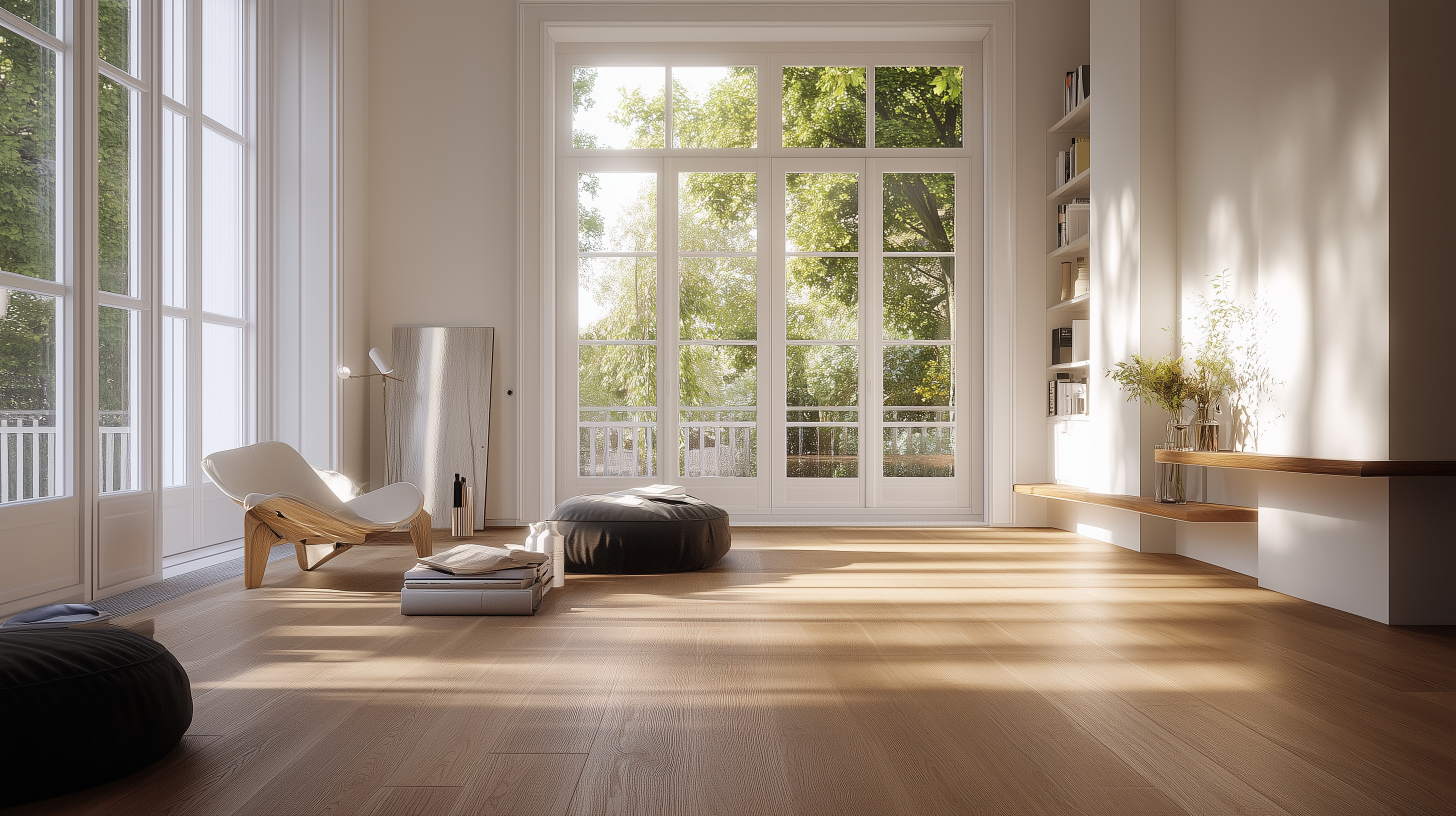
Why Easiklip Hardwood Floors Deserve the Right Base
Hardwood needs freedom to breathe, expand, and move, especially in floating systems. The Easiklip solid oak collection is designed with this principle in mind. Each board connects using precision aluminium clips rather than glue or nails, creating a secure yet flexible floor that performs beautifully when paired with the best underlayment for hardwood floors.
Unlike traditional nail-down floors that restrict movement, Easiklip’s floating installation relies on a slightly cushioned, moisture-resistant base to function properly. That layer not only absorbs subtle subfloor irregularities but also lets the wood expand and contract naturally with seasonal humidity changes.
The result is a floor that feels solid yet forgiving, stable, quiet, and comfortable year-round.
For the best performance, Easiklip recommends pairing its flooring with a 2 mm foam underlayment that includes an integrated vapour barrier, like the one featured in their installation guide (Easiklip Installation Instructions). This combination offers three essential benefits:
-
Acoustic control – The foam layer dampens sound transmission between floors, reducing echo and hollow footstep noise.
-
Moisture protection – The attached vapour film prevents humidity from creeping through concrete or plywood subfloors.
-
Ease of installation – Lightweight, roll-out design keeps the process clean and fast — no adhesive, no mess.
As Wagner Meters notes, moisture can migrate through concrete for years after curing. Even small amounts can affect hardwood stability if not properly controlled. The right underlayment forms the first line of defence, a breathable yet protective barrier that keeps the environment beneath the boards dry and balanced.
When properly combined, the Easiklip clip system and a moisture-resistant underlay create harmony between form and function, a floor that looks beautiful and feels engineered to last.
Verdict: Build from the Ground Up
An underlayment may never be seen, but you’ll feel its influence every day. It softens sound, adds warmth, and shields hardwood from the unseen challenges below.
Here’s a quick way to think about the right pairing for your space:
|
Environment |
Recommended Underlayment Type |
Why It Works |
|
Basement/Concrete Slab |
Rubber or foam with vapour barrier |
Blocks moisture and cushions rigid subfloors |
|
Upper Floors/Condos |
Cork or felt |
Absorbs sound and softens step noise |
|
Cold Climates / Radiant Heat |
Felt or cork |
Adds thermal insulation and stability |
|
Main Level / Mixed Use |
Mid-density foam or combination underlayment |
Balances comfort, sound, and protection |
The key is simple: match your underlayment to your environment and never skip the moisture test.
“The floor’s lifespan depends as much on what’s underneath as what’s above,” says Brett Miller of the National Wood Flooring Association. “The best floors are built on thoughtful preparation.”
When paired with Easiklip’s floating solid oak system, the right underlay becomes part of the architecture, quieting, cushioning, and protecting with every step.
Pair Easiklip Flooring with the Best Underlayment for Hardwood Floors for Lasting Results
The beauty of a hardwood floor begins below the surface. Beneath each plank lies a foundation that determines how the floor will sound, move, and endure. The right underlayment transforms hardwood from a simple surface into an experience that is quiet, comfortable, and confidently built for the long term.
With Easiklip’s floating solid oak system, you can pair authentic European hardwood with an underlay engineered to complement it. The result is flooring that breathes with your home, cushions each step, and stands up to the realities of Canadian seasons.
Whether you’re installing over concrete, plywood, or radiant heating, Easiklip provides the technical guidance and products to make every layer work in harmony.
Explore Easiklip’s hardwood collections and installation resources, or view the full installation guide.
Because a beautiful floor doesn’t start with wood — it starts with what’s beneath it.
